Melnik arrives first in memory as landscape, a small town clasped between pale sandstone formations and the slopes of the Pirin mountains. It is the smallest town in Bulgaria, but its presence feels larger than its scale. We spent a weekend here with some fellow colivers at Avalon Coliving. Just an hour separates the two towns, quick enough to be accessible yet long enough to feel like a journey into a different world.
The town itself is a single street lined with warm stone houses, red-tiled roofs, and taverns where wine and meze spill across wooden tables. Though modest in size, Melnik is surrounded by striking natural features and layered with centuries of history.
Melnik town
Melnik is officially the smallest town in Bulgaria, with a population of just a few hundred, but for centuries it has carried weight beyond its size. In the 18th and 19th centuries it was a thriving commercial hub, exporting wine, wood, and crafts across Europe. Today, only fragments of that era remain, but they are enough to give the town its atmosphere. Walking down the main street feels like entering a preserved corridor of history. Traditional Revival-period houses lean over the cobbles, with stone foundations supporting upper stories of wood and plaster. Some are restored, others crumble slowly, but all carry the texture of time.
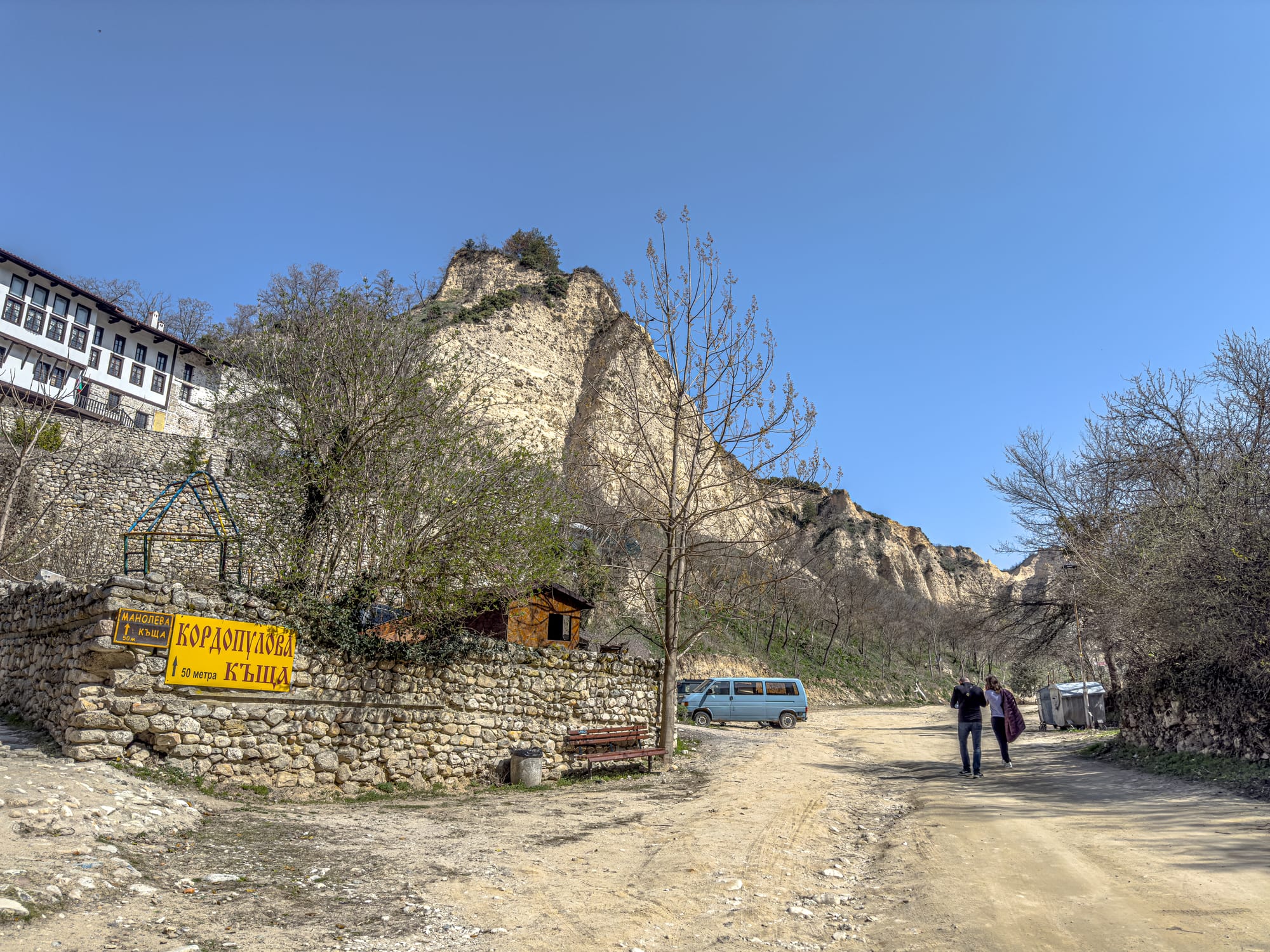
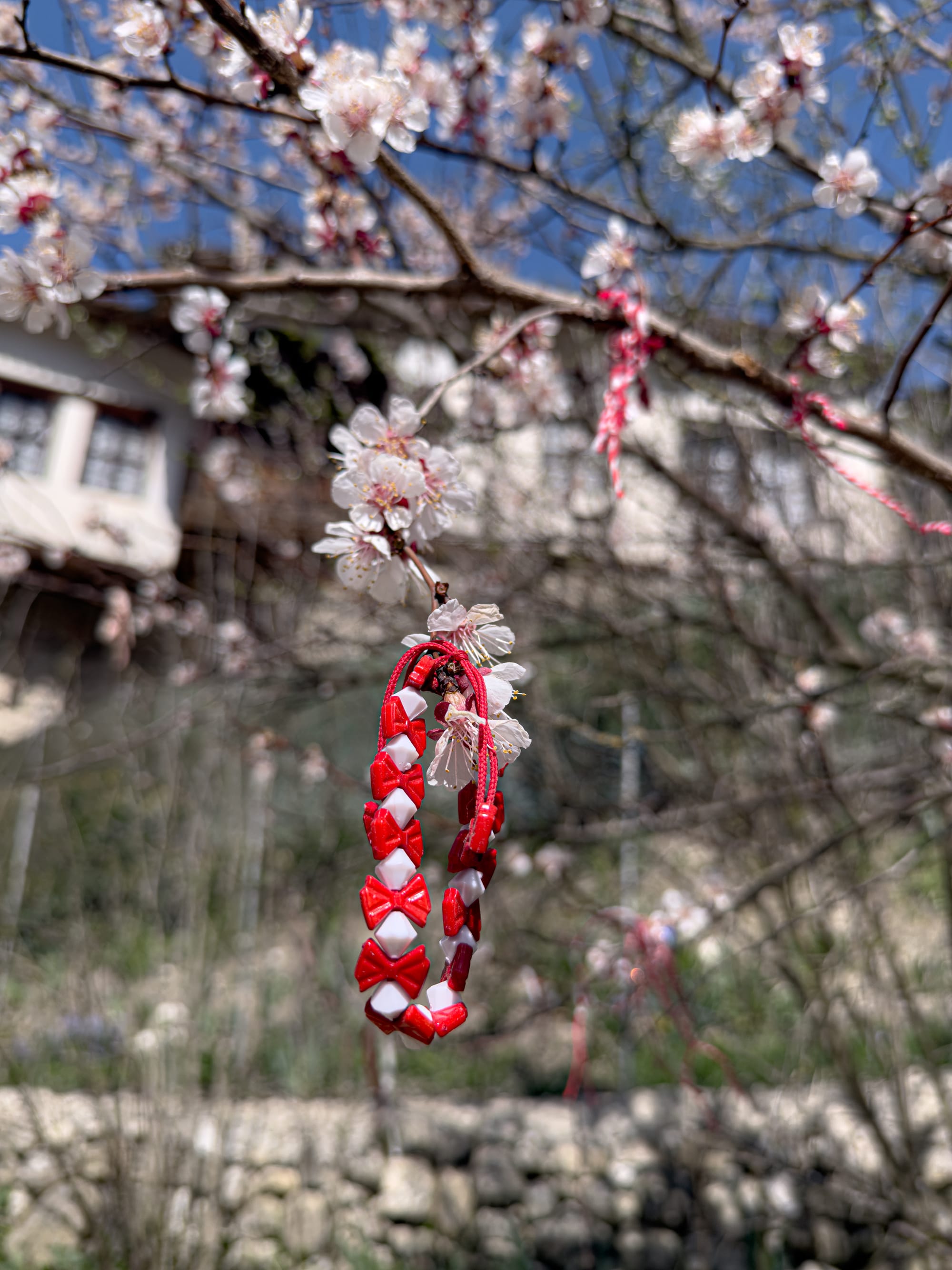
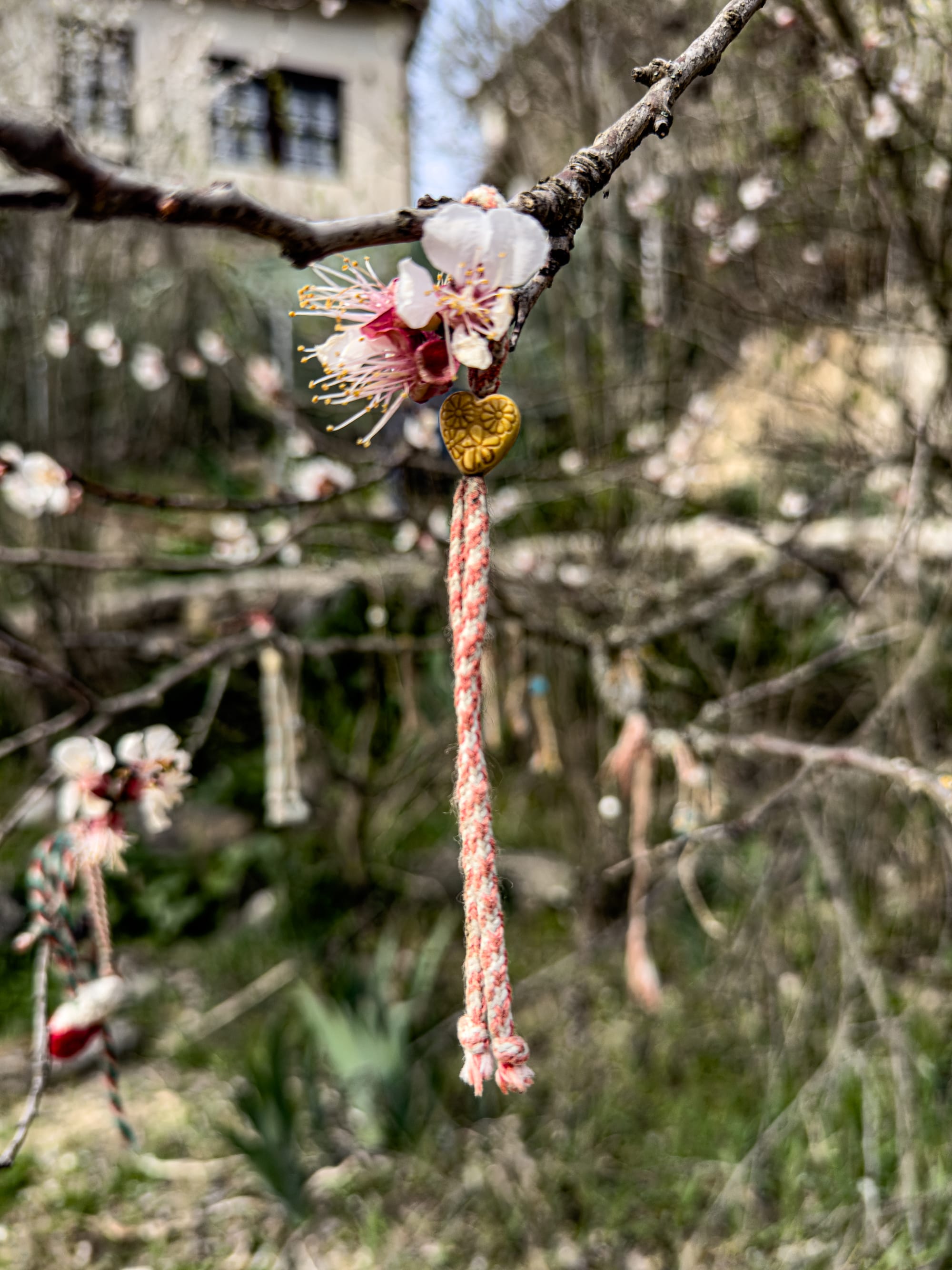
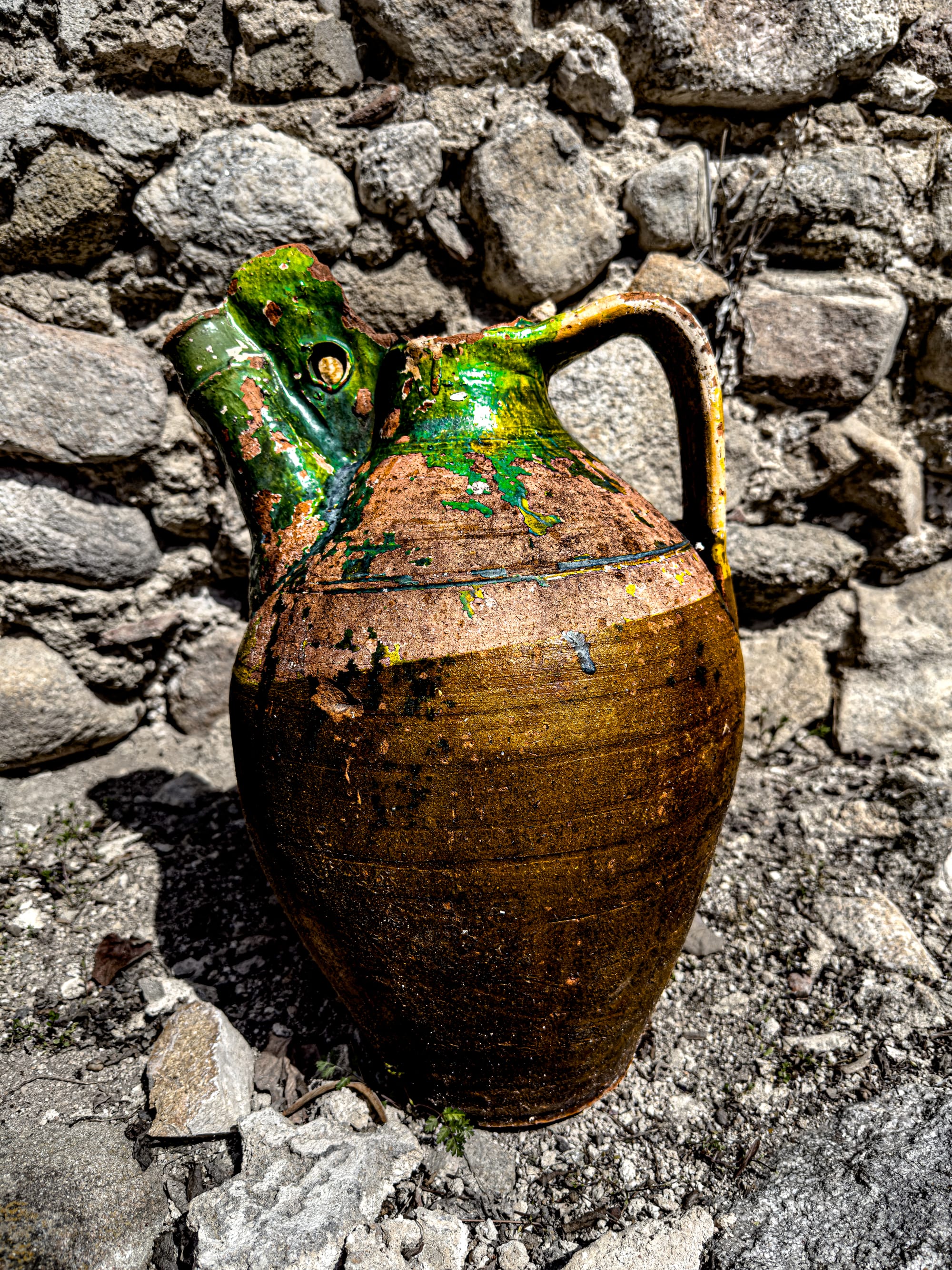
Scenes from Melnik: the road to the Kordopulov House, Martenitsi tied to blooming branches, and rustic pottery
Restaurants line the street, each with its own shaded terrace and handwritten menu. At one of these taverns, we sat down for lunch and ordered roasted potatoes, rich with seasoning and served in generous portions.
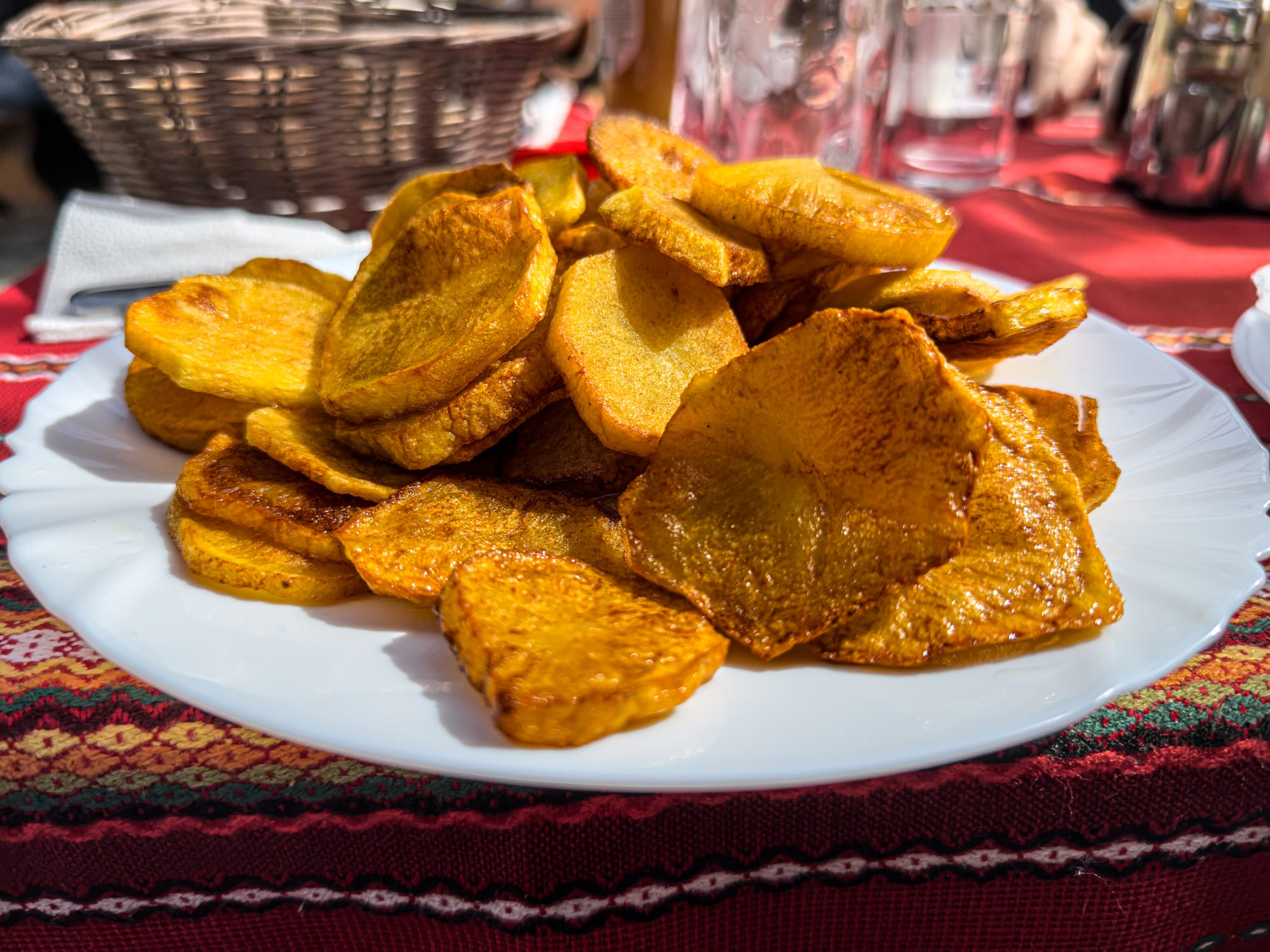
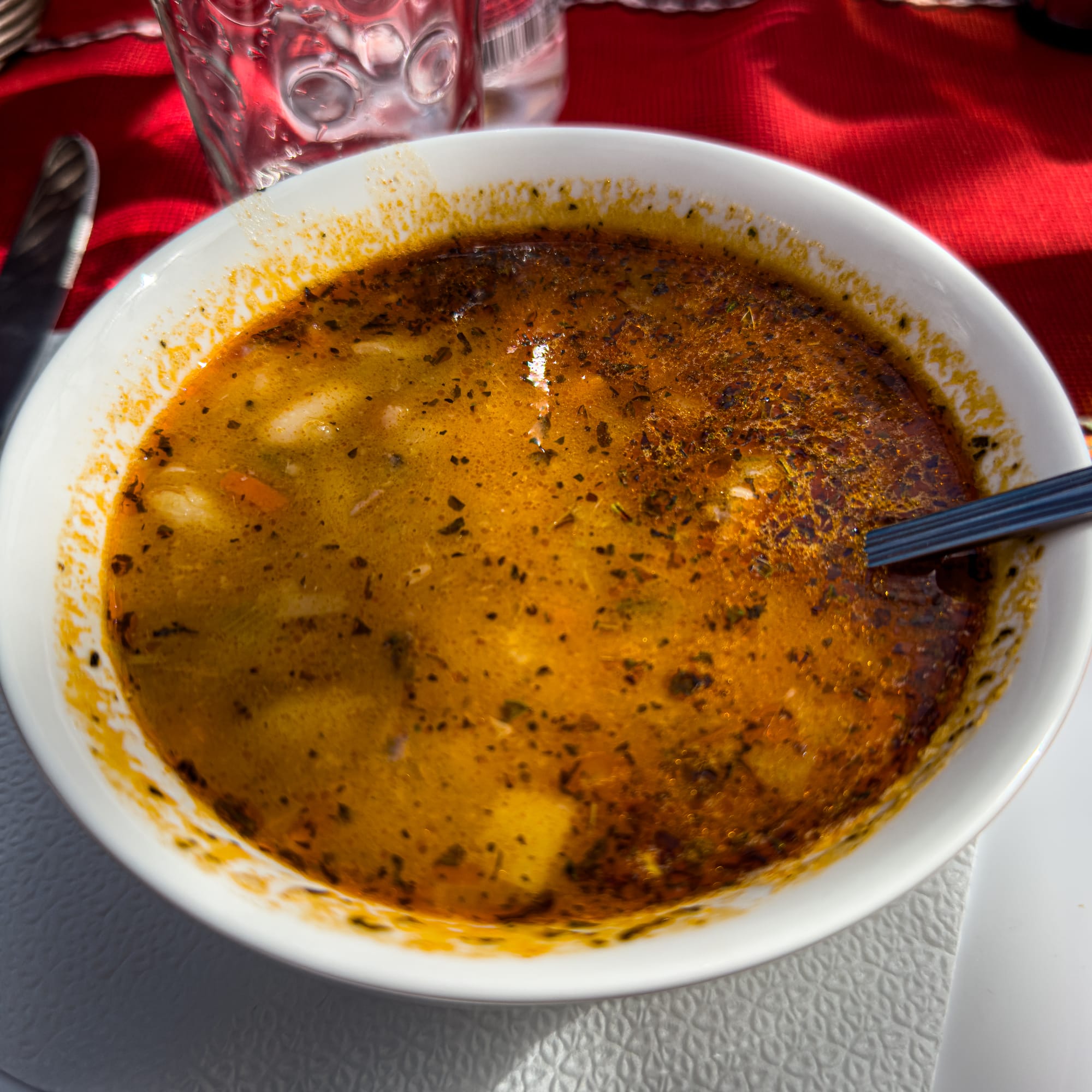
Traditional meal in Melnik: roasted potatoes served with a hearty bean soup at a local restaurant
Shops sell local honey, dried herbs, and jars of preserves. Others display handmade pottery, wood carvings, and woven textiles, carrying forward traditions that link Melnik to the surrounding villages.
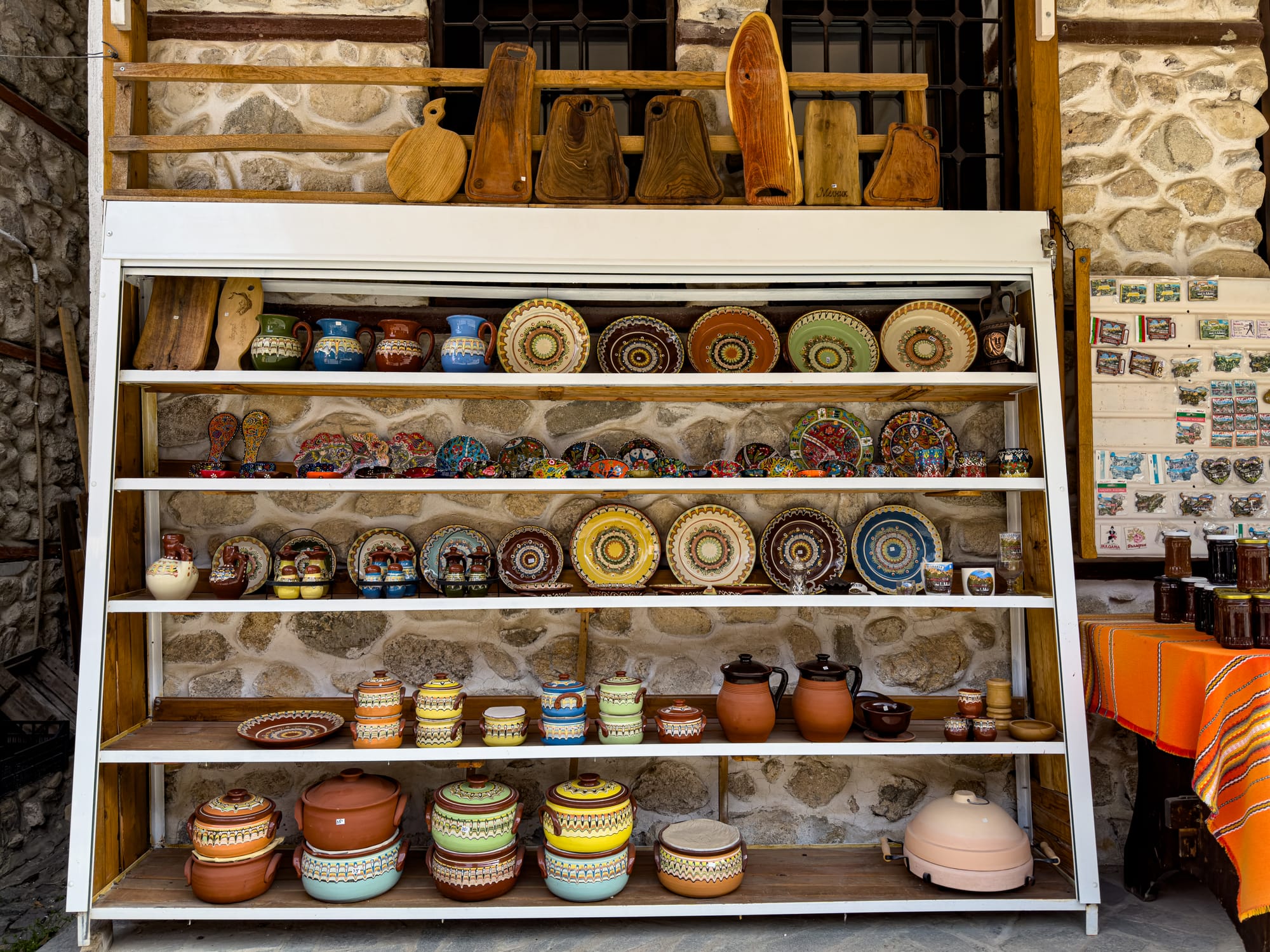
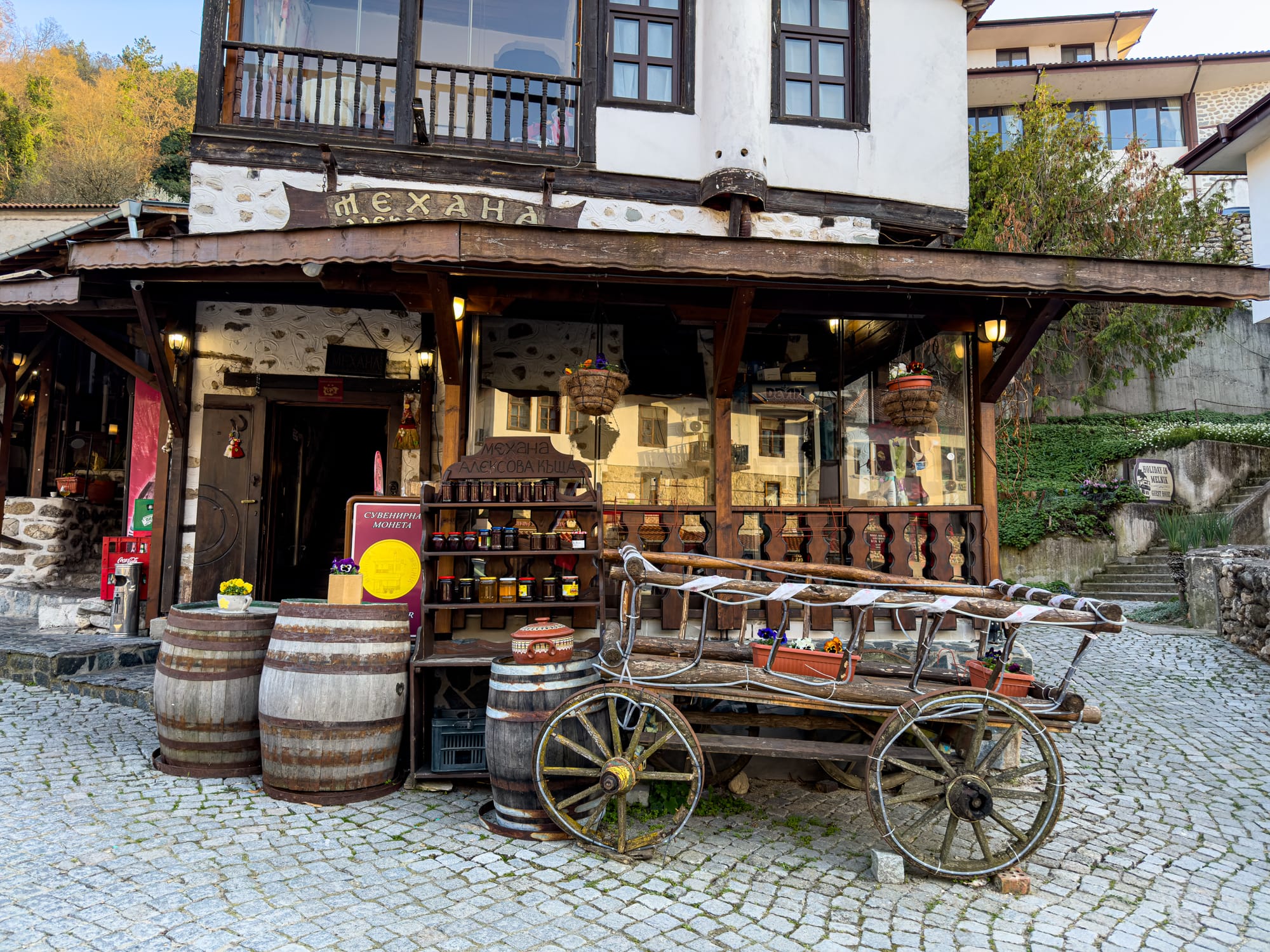
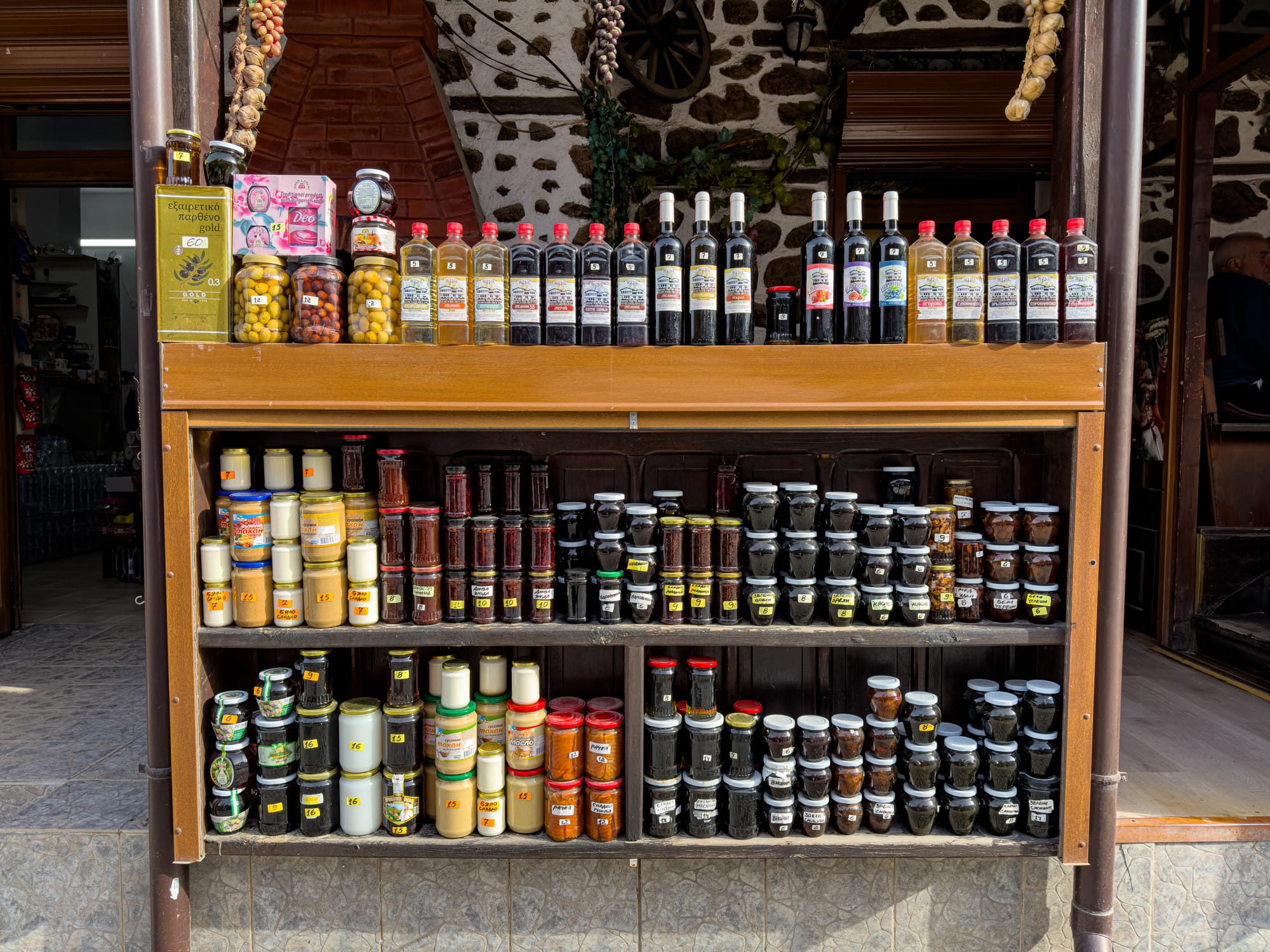
Shops in Melnik offering local products, from wines and preserves to handmade goods displayed in traditional buildings
Staying overnight allows you to experience the town in both light and shadow. During the day, visitors arrive in groups, often heading straight to the pyramids or the wineries. By evening, the streets quieten, and the sound of footsteps on cobblestone becomes more noticeable. From our hotel window, we watched as the mountains shifted color with the sunset, deepening from ochre to violet as shadows pooled in the valley. At night, the air cools and the scent of pine drifts in from the nearby hills.
The pyramids and the valley
The Melnik Earth Pyramids rise just outside the town, shaped over millions of years by erosion and weather. These natural sculptures reach heights of up to 100 meters, their cones and spires carved from sandstone and clay. The pyramids are constantly shifting. Rain, wind, and sun wear the stone down even as new shapes form, making the landscape feel alive.
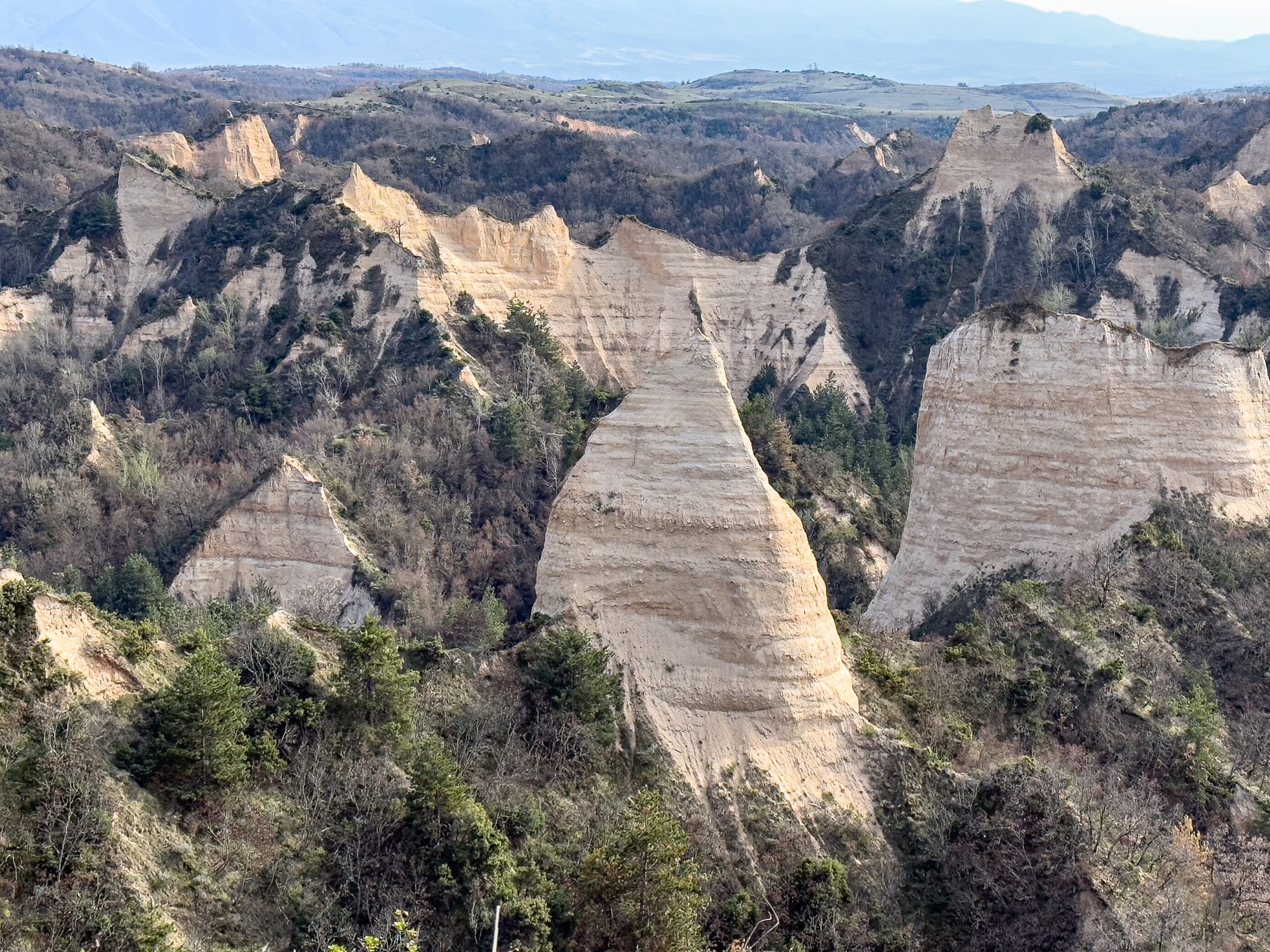
Walking here is like stepping into a story told by stone. Paths weave between formations that resemble castles, towers, and mushrooms. Locals and visitors alike sometimes call them “the fairy chimneys of Bulgaria.” At sunset, the pyramids glow gold and red, and the shadows make them appear even taller, sharper, and more improbable. They are protected as a natural landmark, and the entire valley has become a draw for geologists, hikers, and anyone with an eye for unusual beauty.
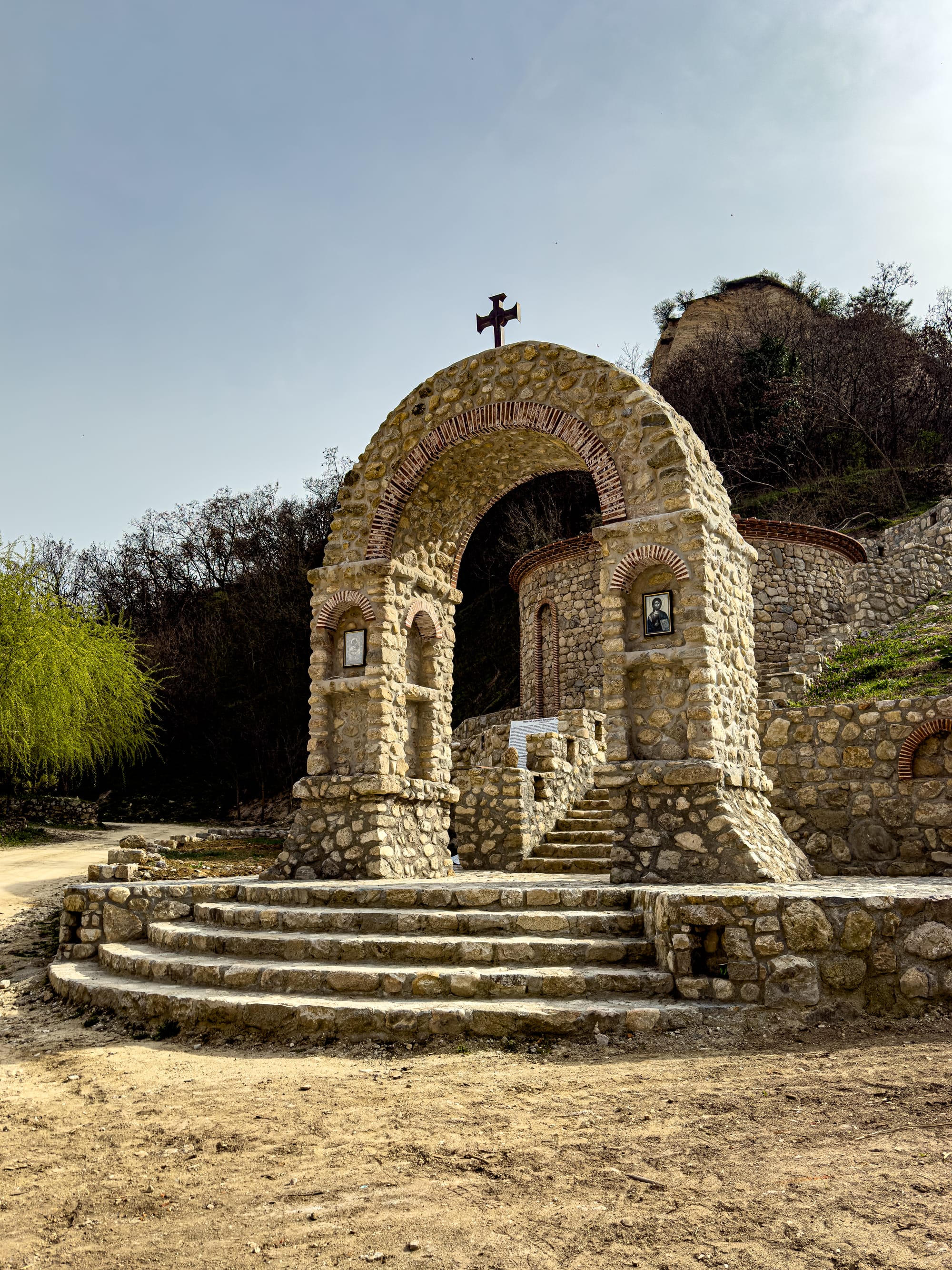
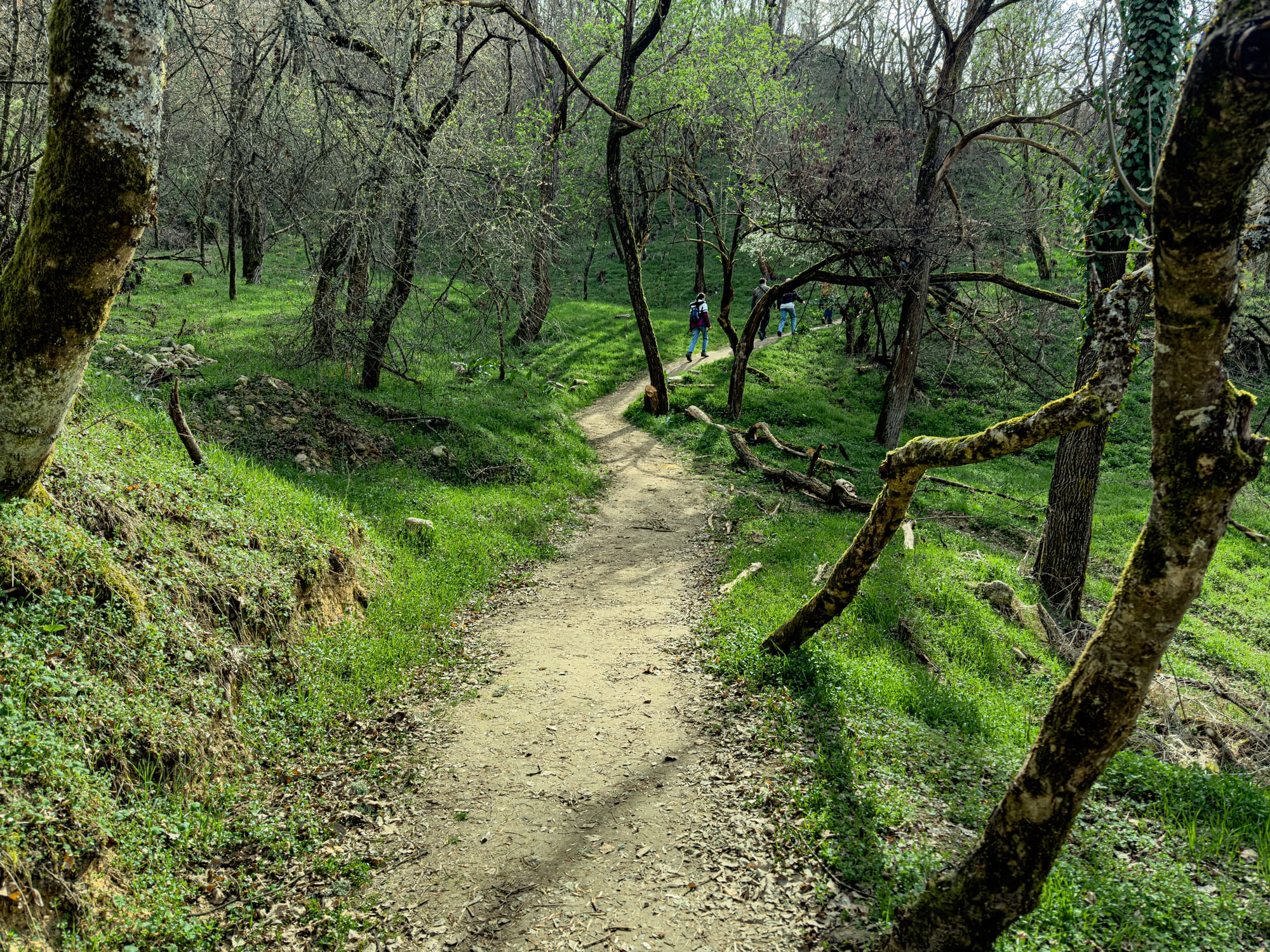
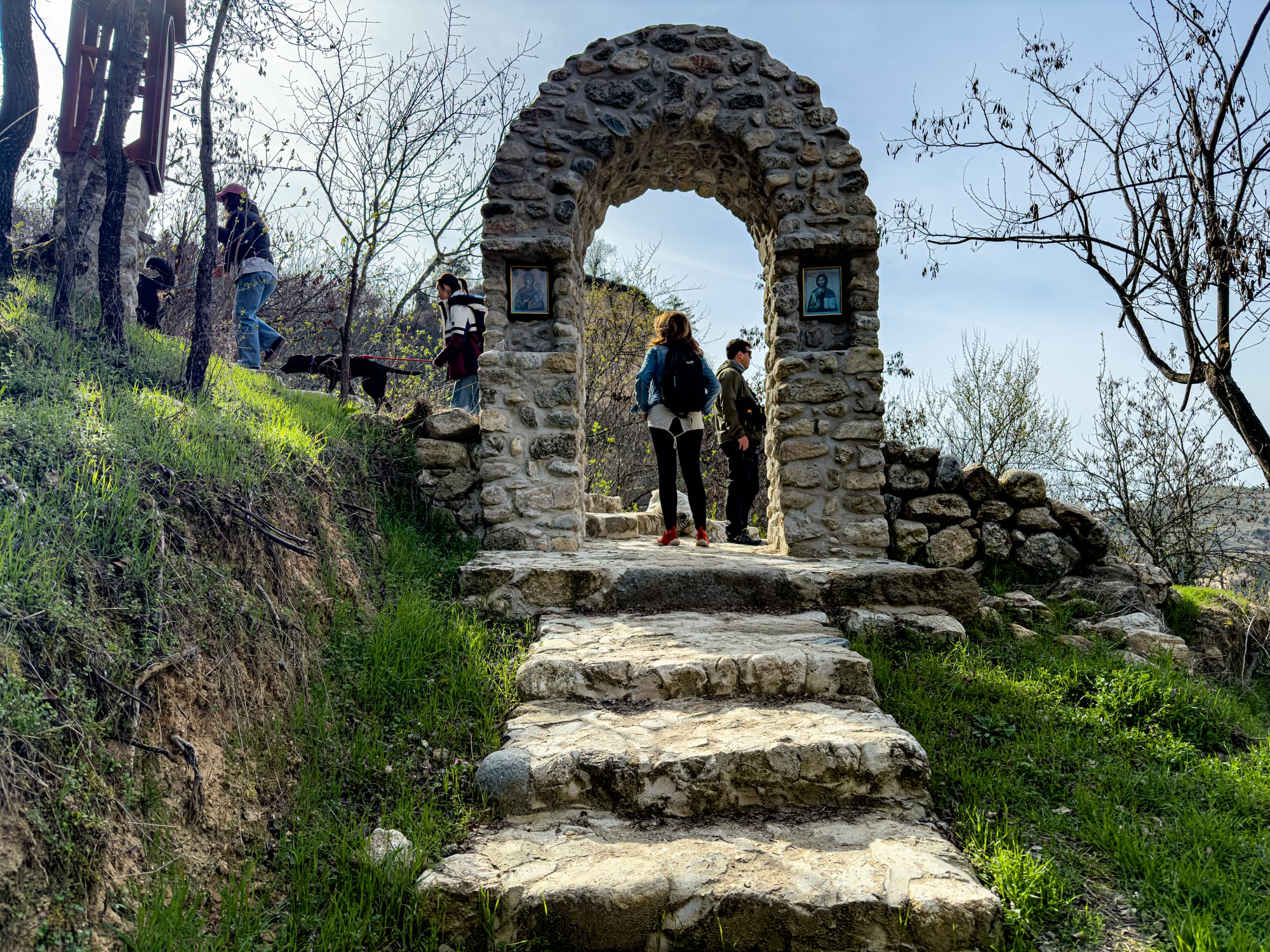
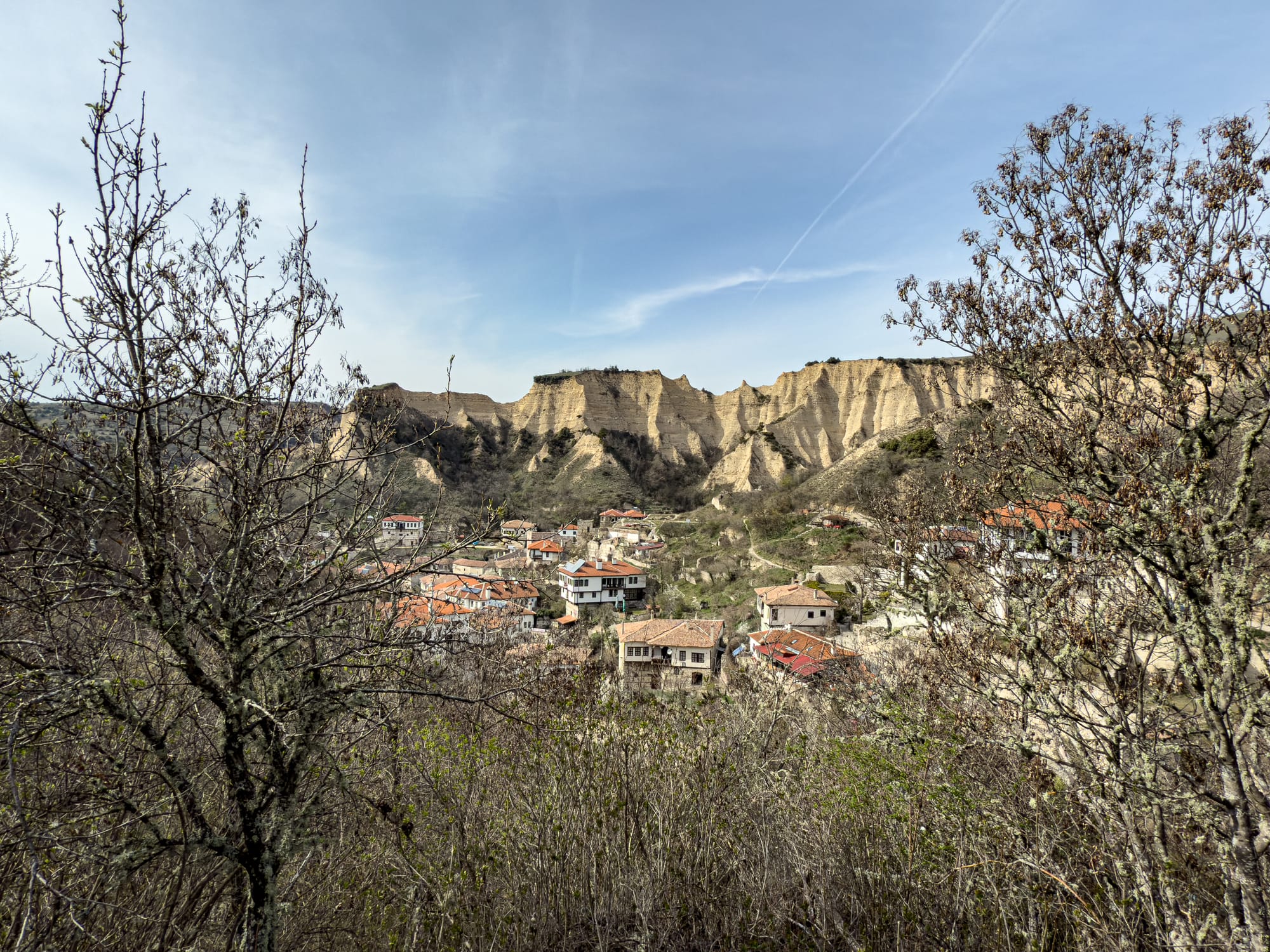
Walking the trails around Melnik: stone archways, forest paths, and hillside views of the Earth Pyramids
Myths have sprung up around the pyramids, as they often do when land feels uncanny. Some say the pyramids are the work of giants, frozen mid-stride by divine punishment. Others believe they are remnants of a great flood, left behind when waters receded and revealed their sculpted walls. For locals, they are both explanation and metaphor, a reminder that land carries memory and that human stories grow from the soil as much as vines or stone houses do.
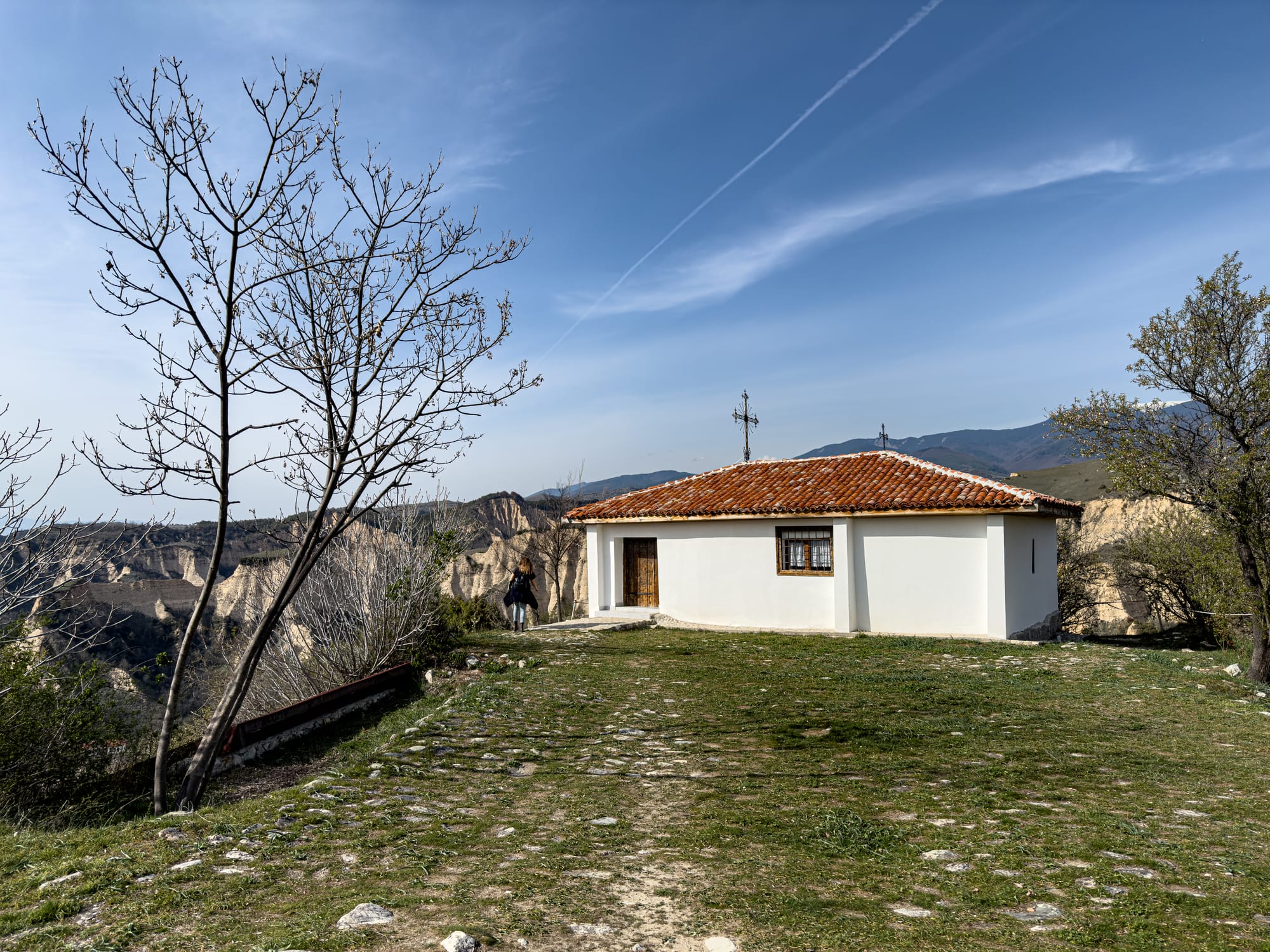
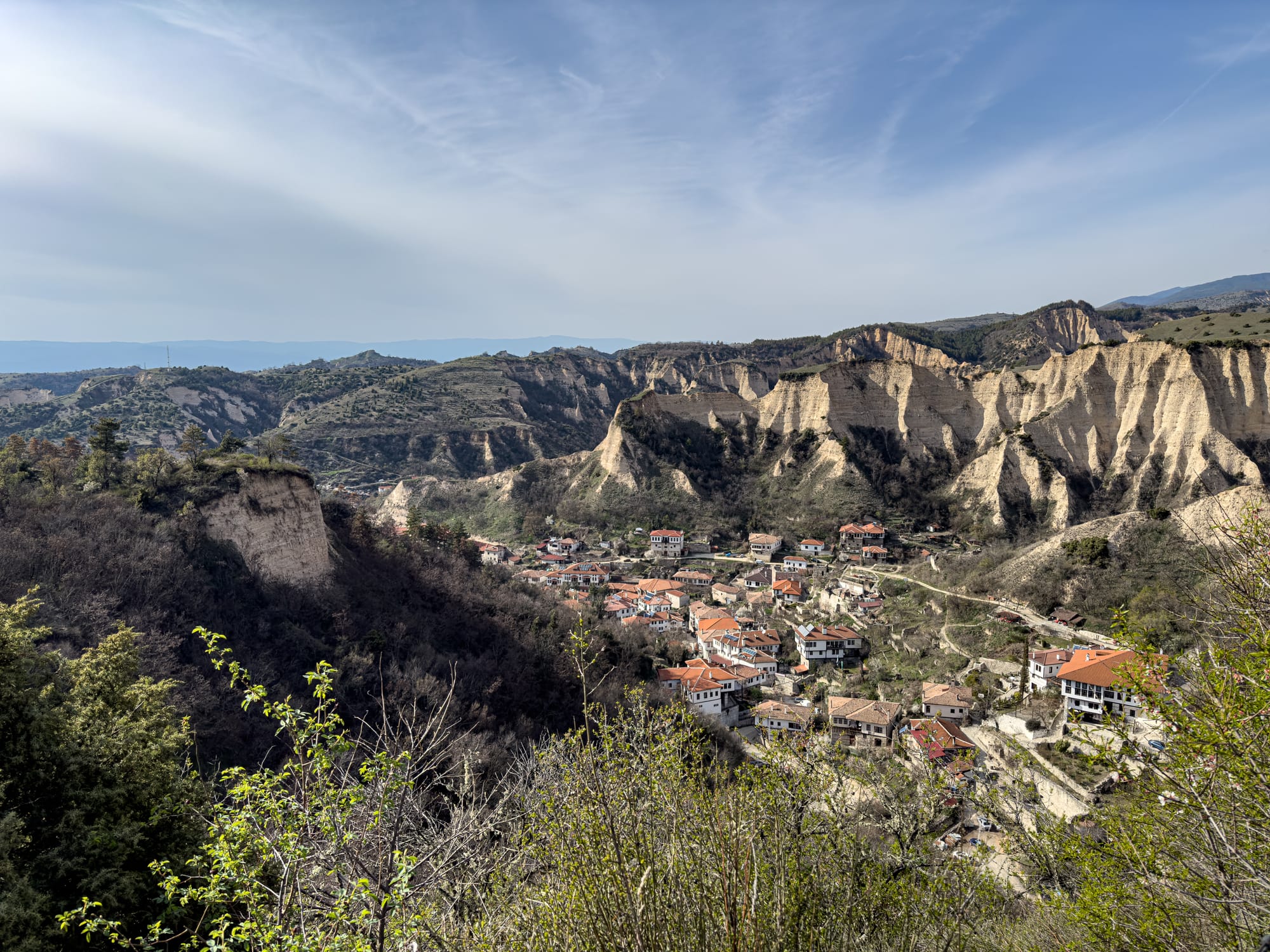
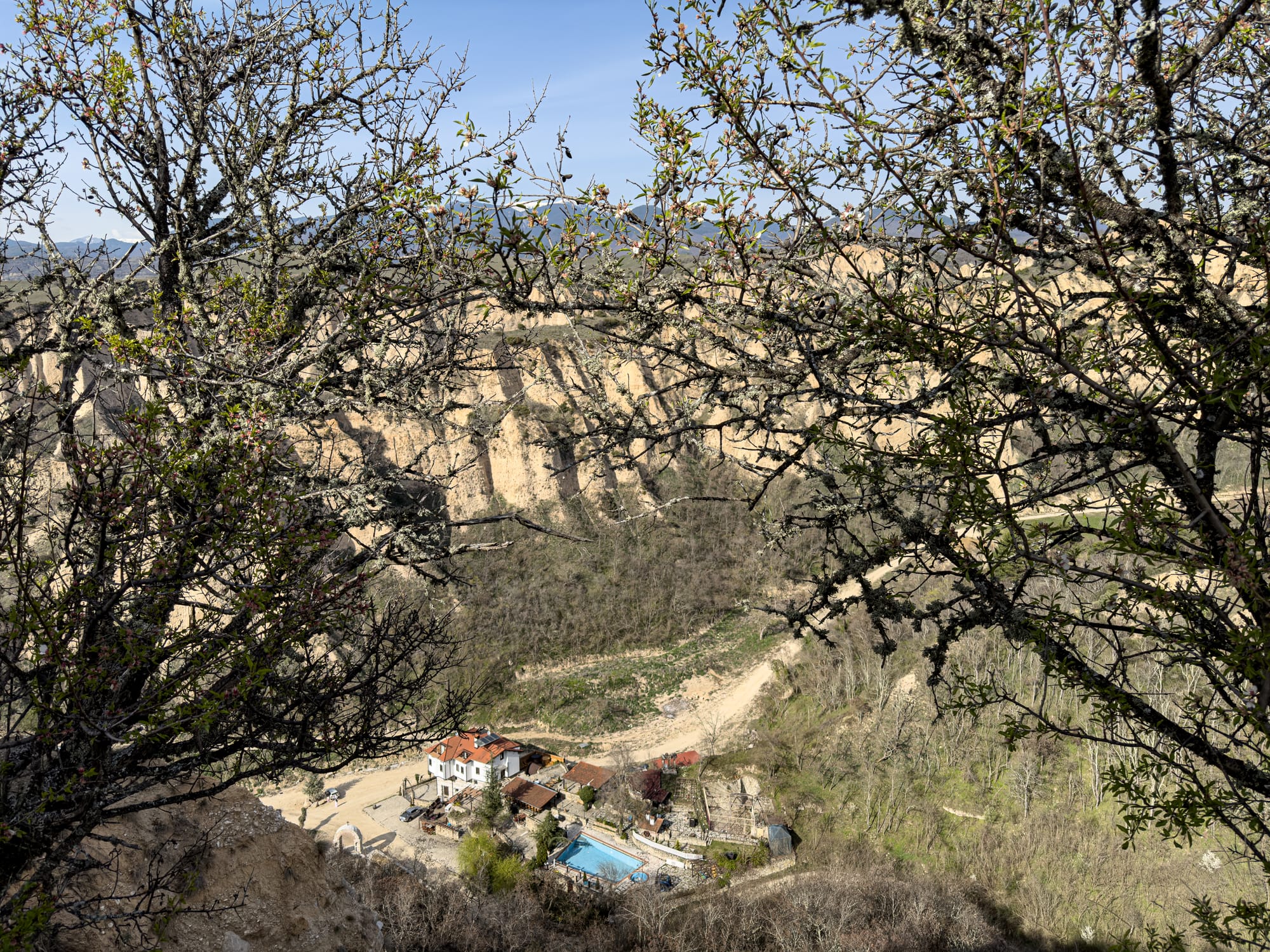
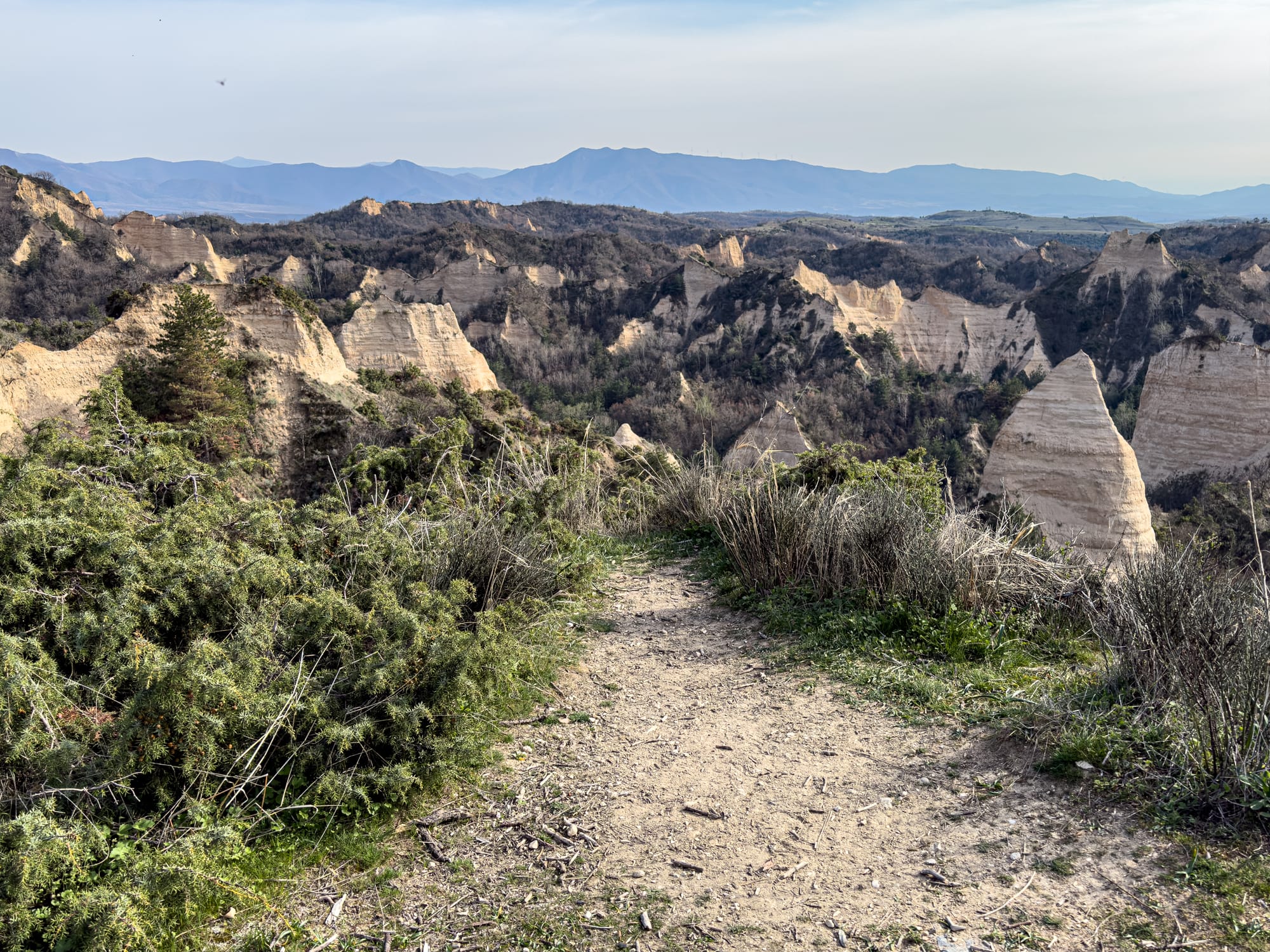
Views from the hiking trails around Melnik
The hiking trail that loops through the pyramids is about six to eight kilometers long with gentle climbs and panoramic ridges. It is not difficult, but it asks you to slow down, to let the land guide your pace.
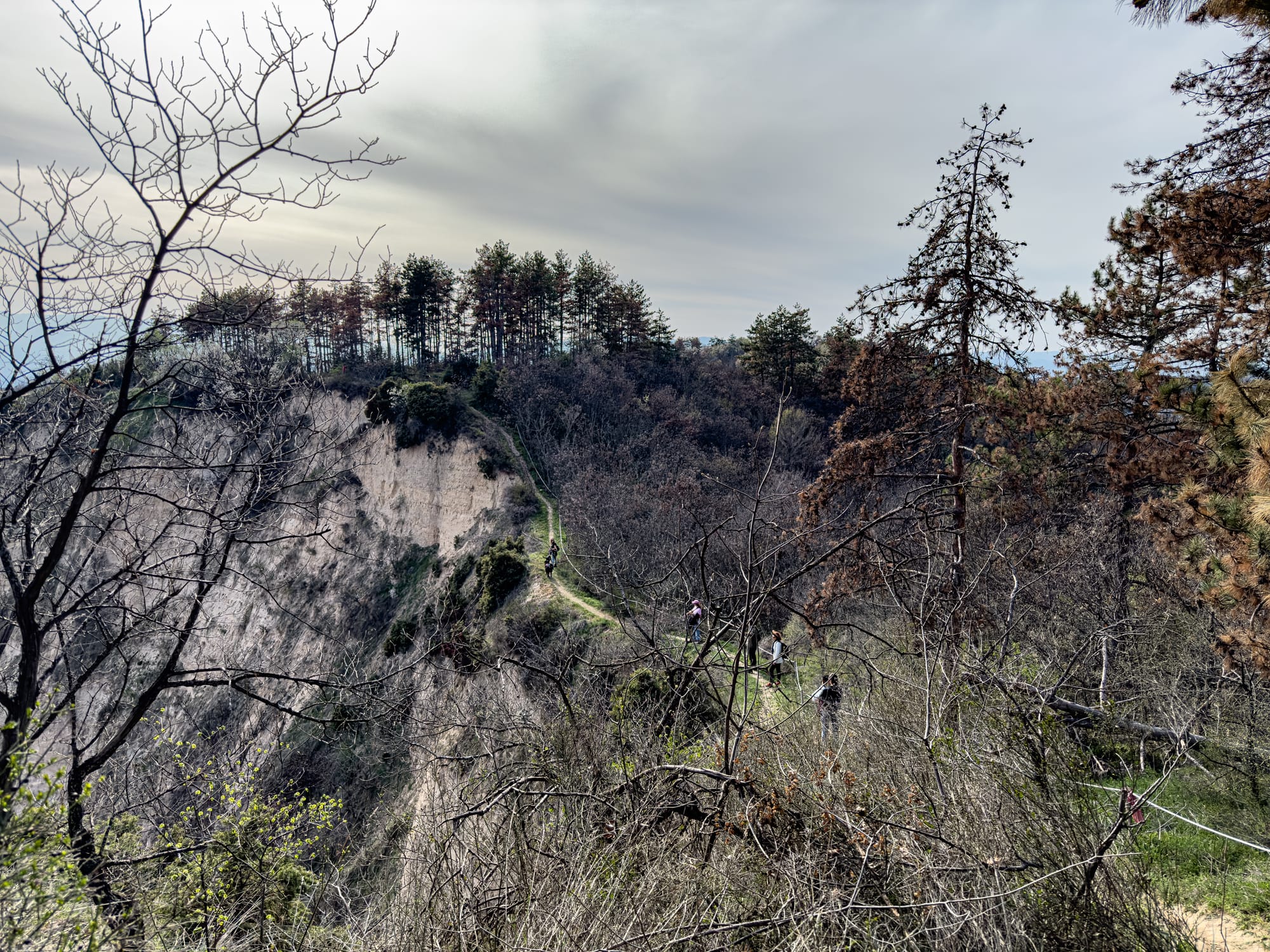
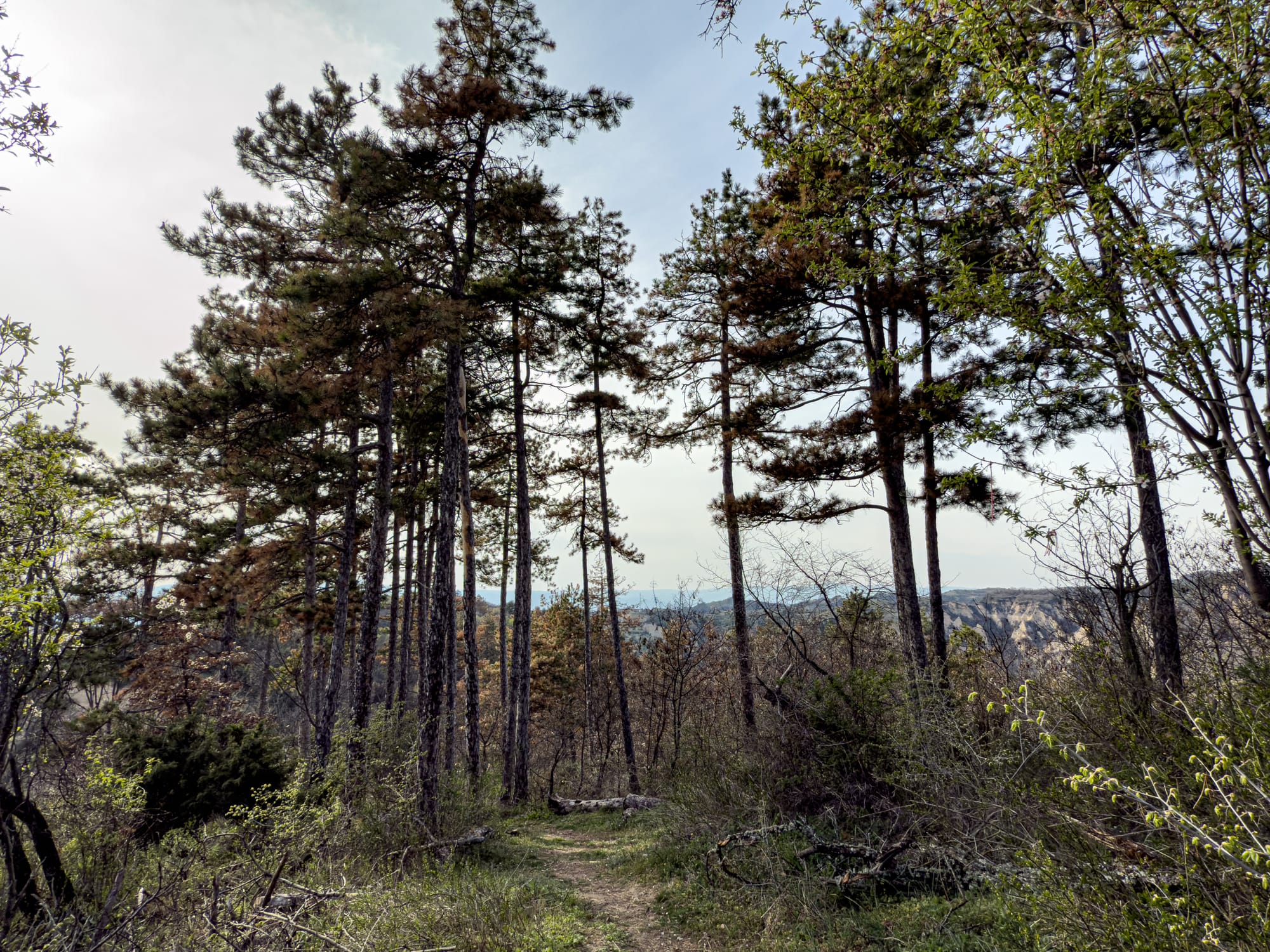
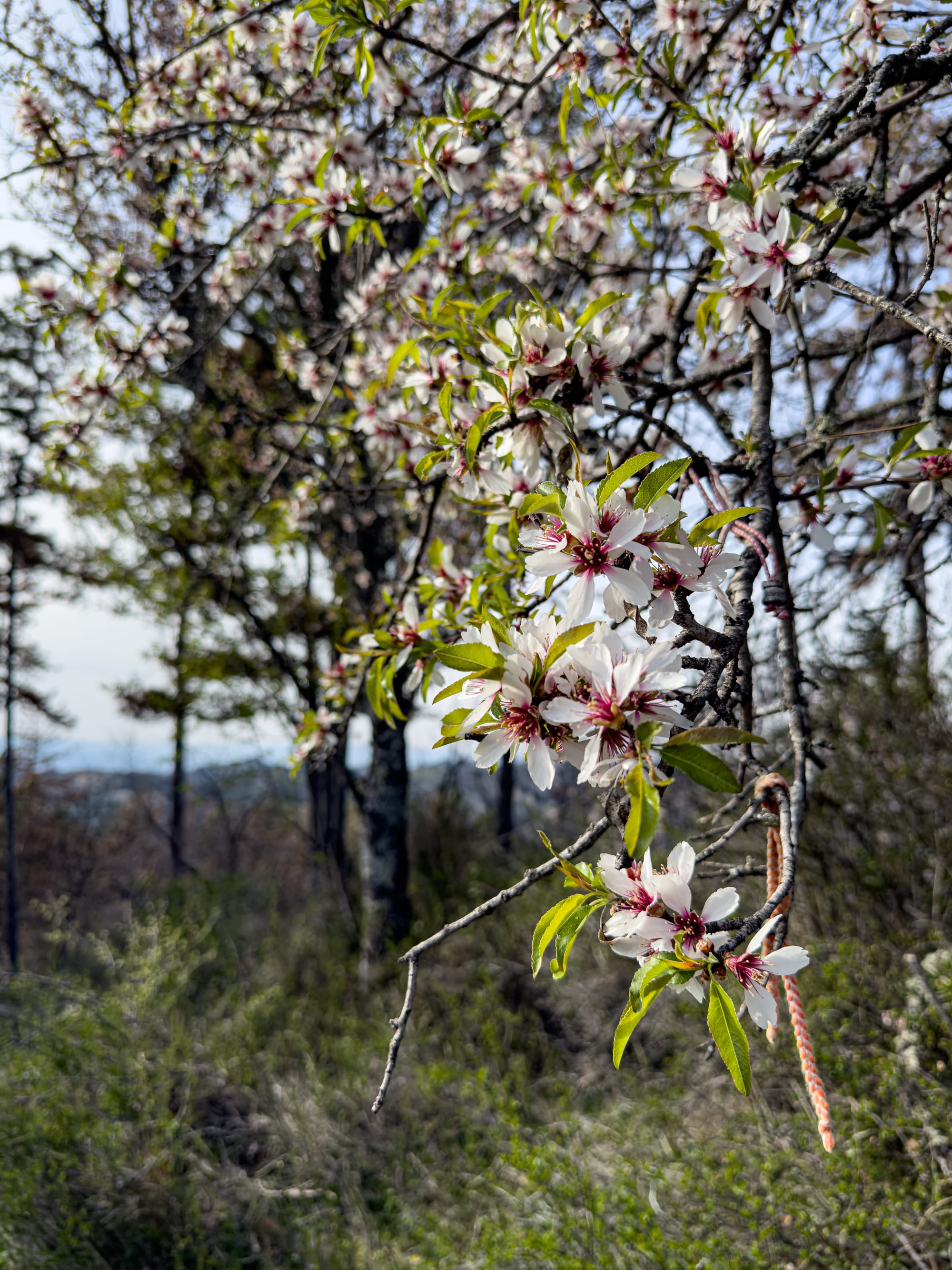
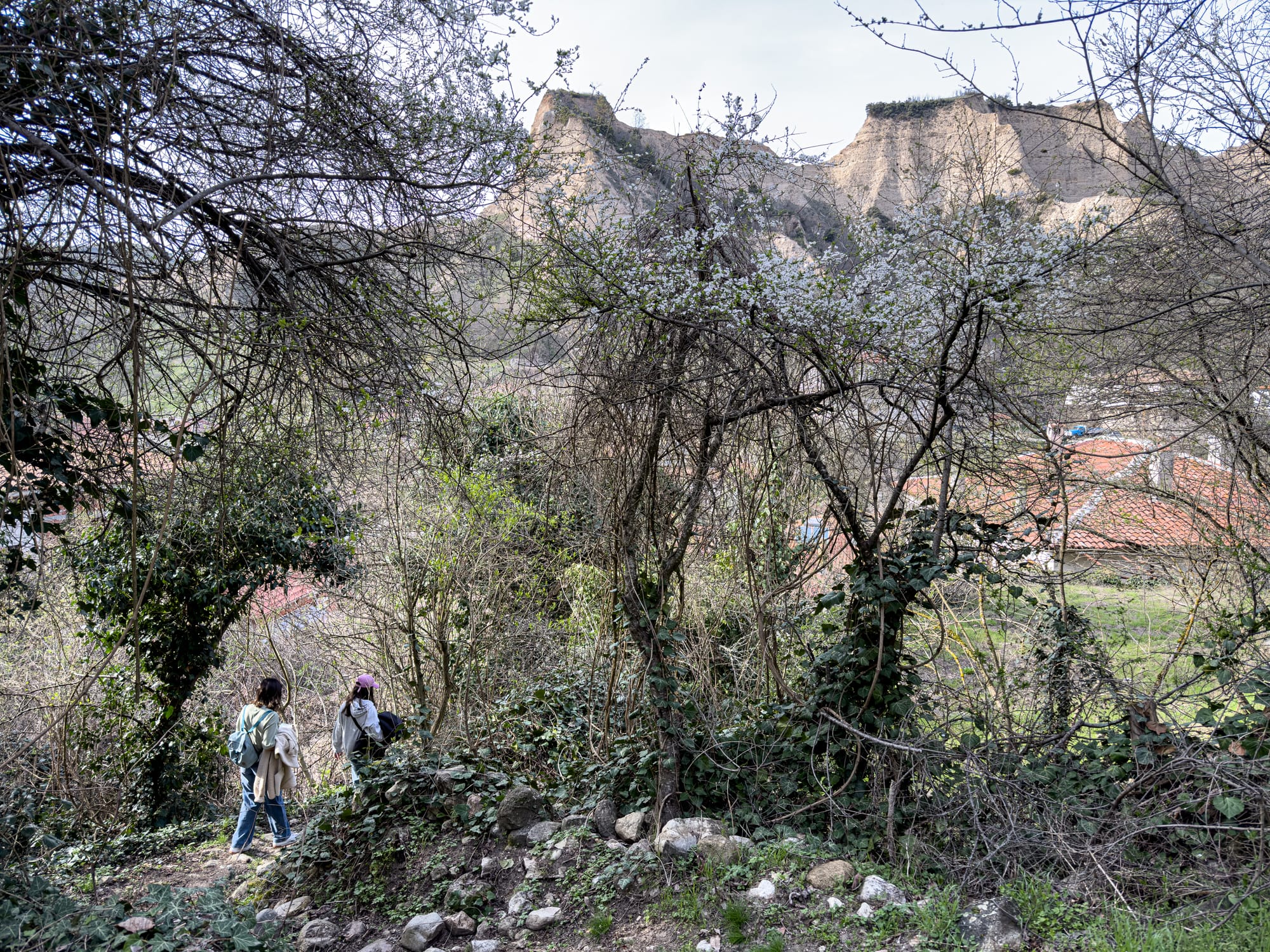
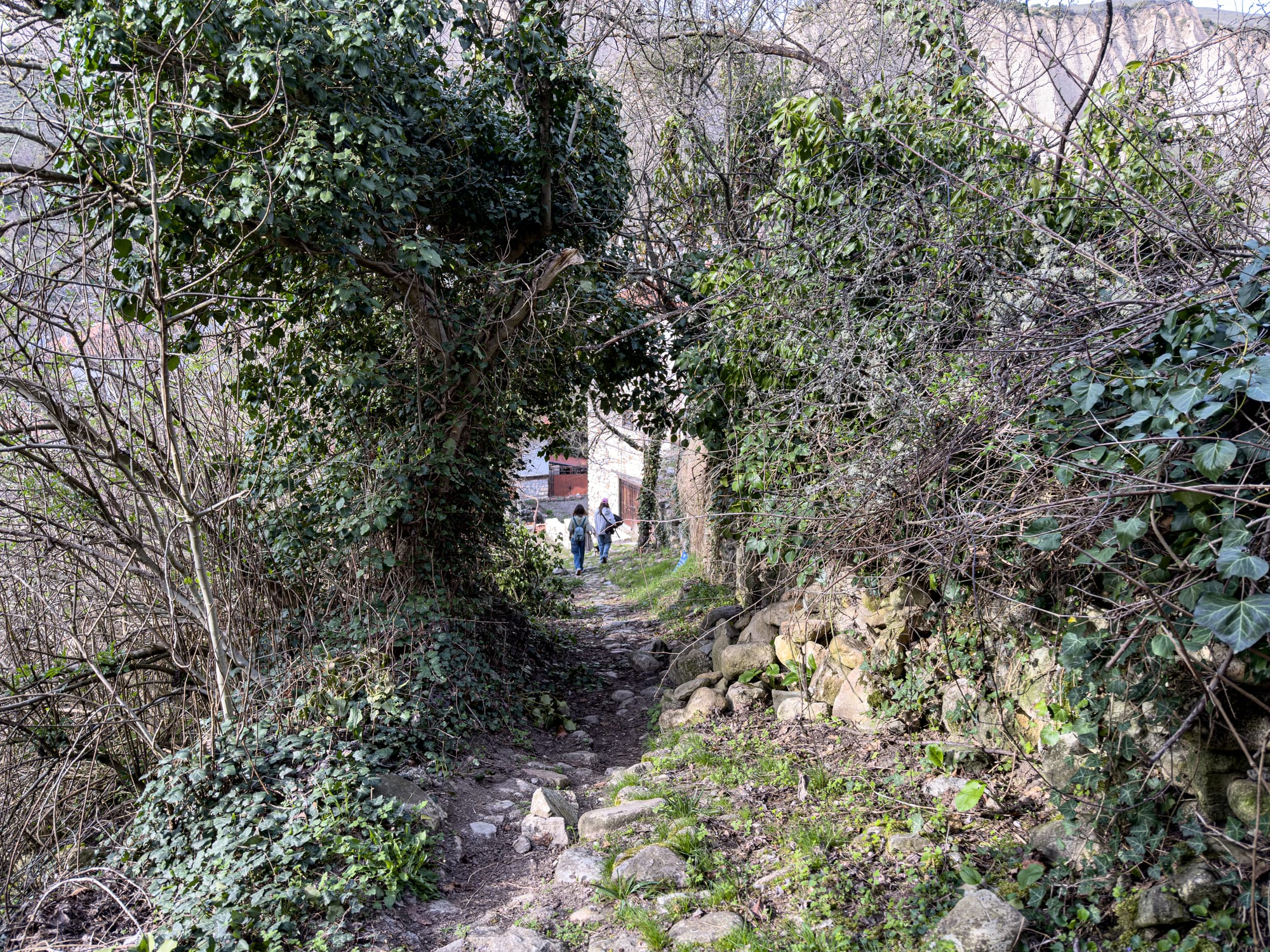
Spring hikes around Melnik: pine forests, blossoming branches, and ivy-covered paths
From the top, you see not just Melnik but the whole Struma valley stretching out, dotted with vineyards and cut by rivers that gave the pyramids their shape.
Wine and the Kordopulov House
Melnik has been known for its wine for centuries. The dry, sandy soils and Mediterranean climate make it ideal for grapes, and the local variety, Shiroka Melnishka Loza, is unique to the region. It produces deep reds with smoky notes, wines once exported to Venice and Vienna. The tradition continues today, blending indigenous grapes with international varieties such as Merlot and Syrah.
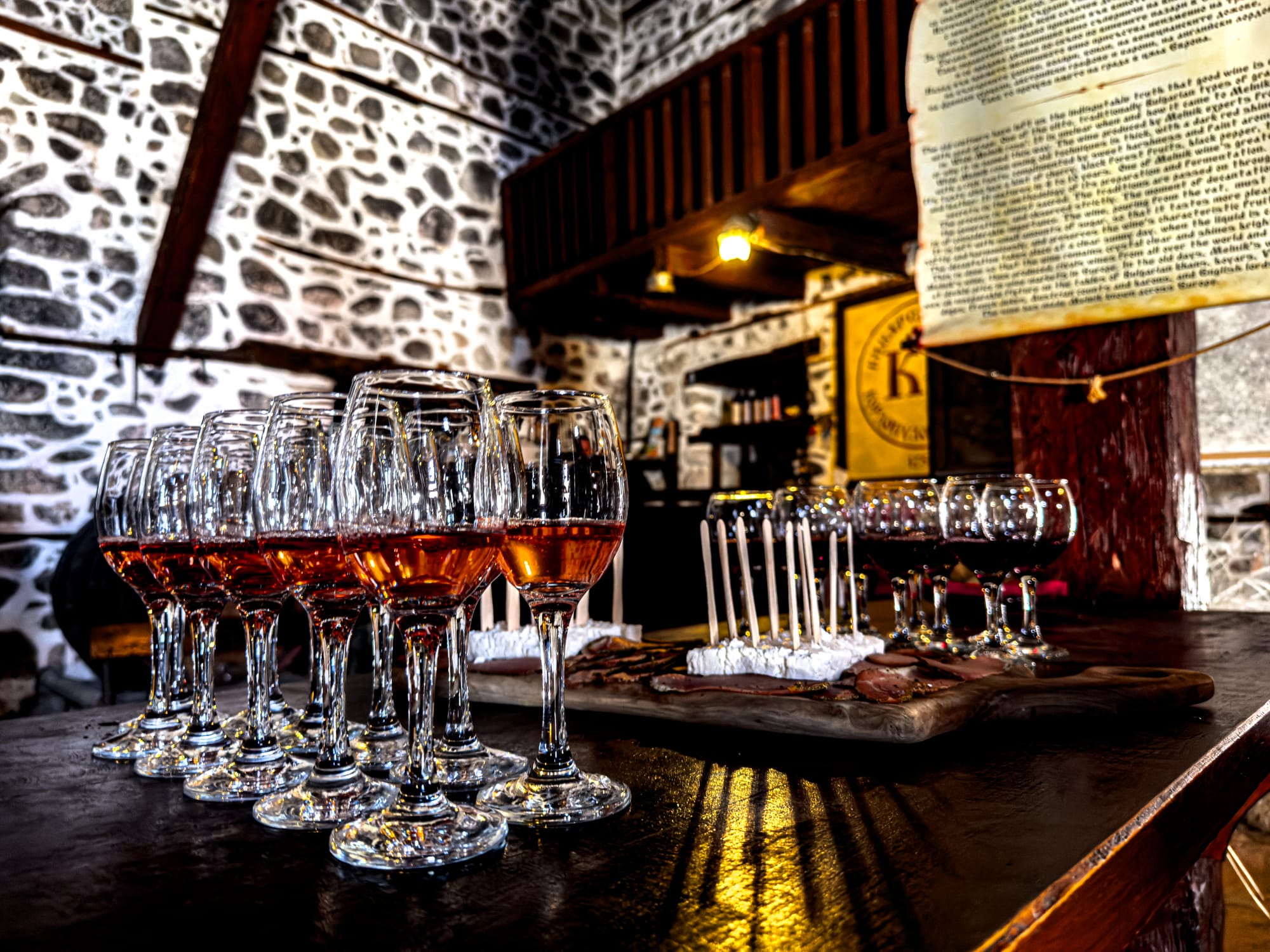
We stopped at a local winery. Built into sandy hills, the winery uses a gravity-flow system that minimizes handling and lets the wine develop naturally. Below ground, tunnels carved directly into the sandstone maintain a steady, cool temperature. Walking through those caves, lined with barrels, felt like entering a quiet archive of the valley itself.
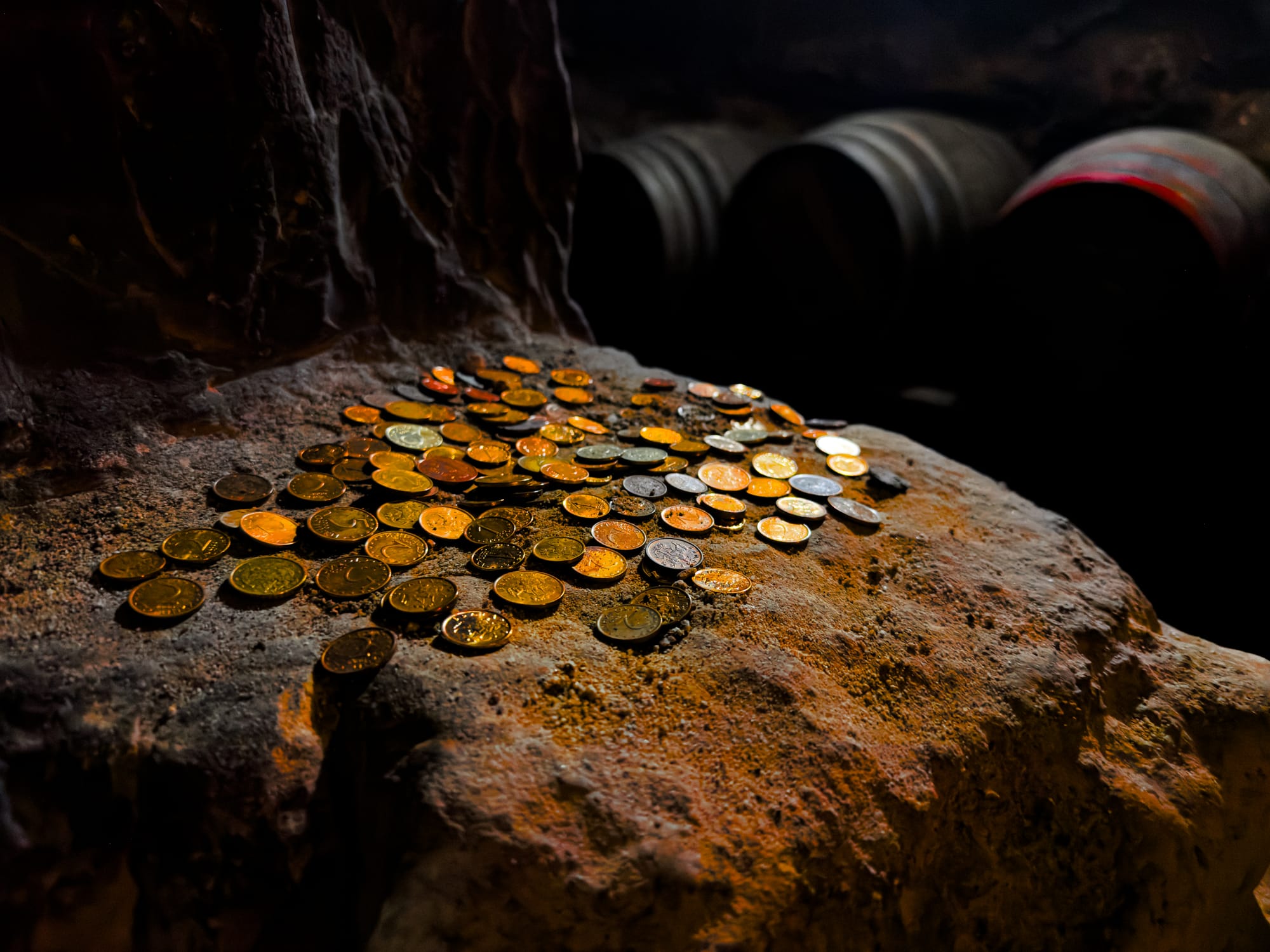
The Kordopulov House, dating from 1754, is also part of this wine tradition. It is the largest house from the Revival period in the Balkans, built by a wealthy merchant whose family traded wine across Europe.
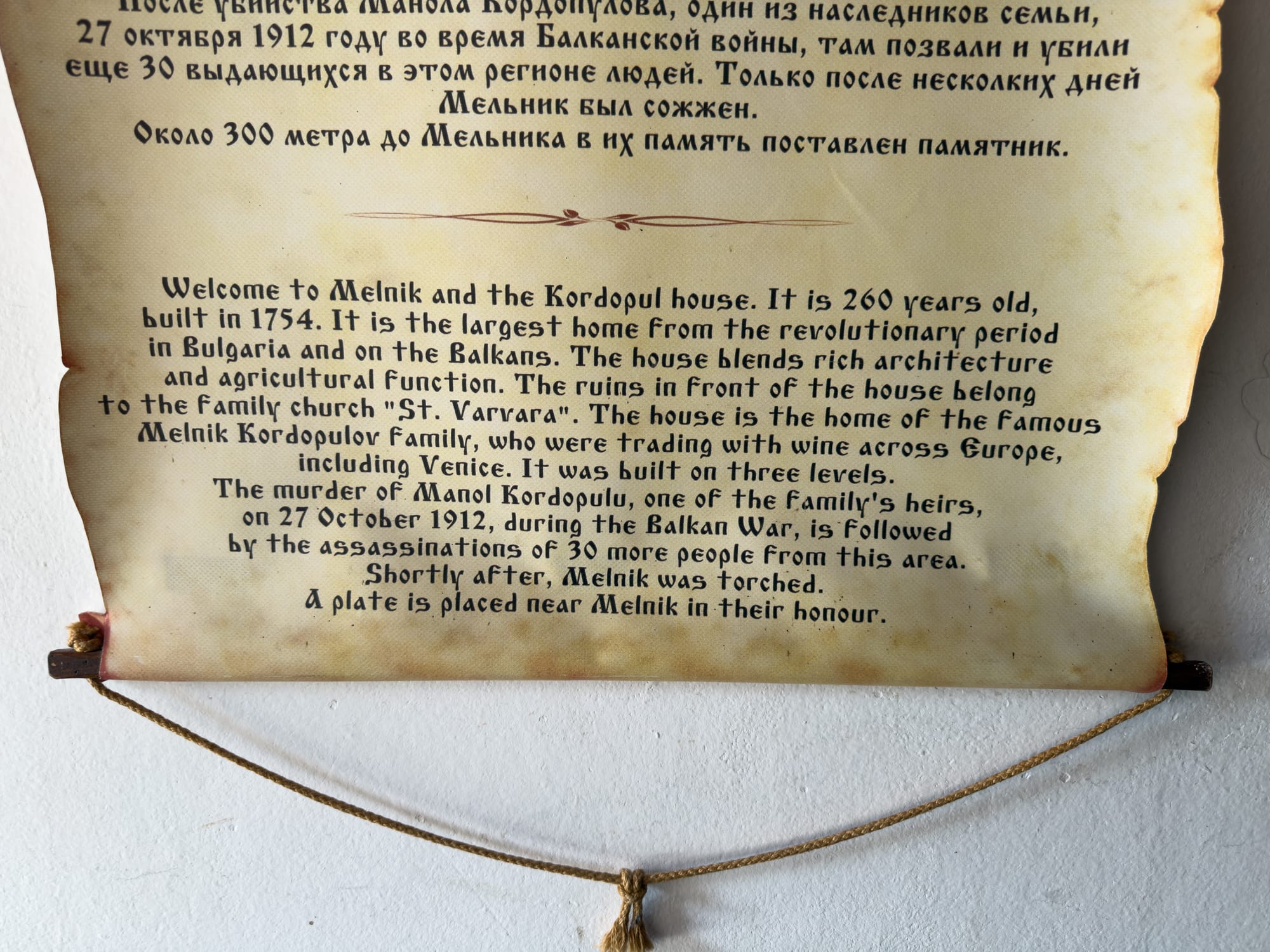
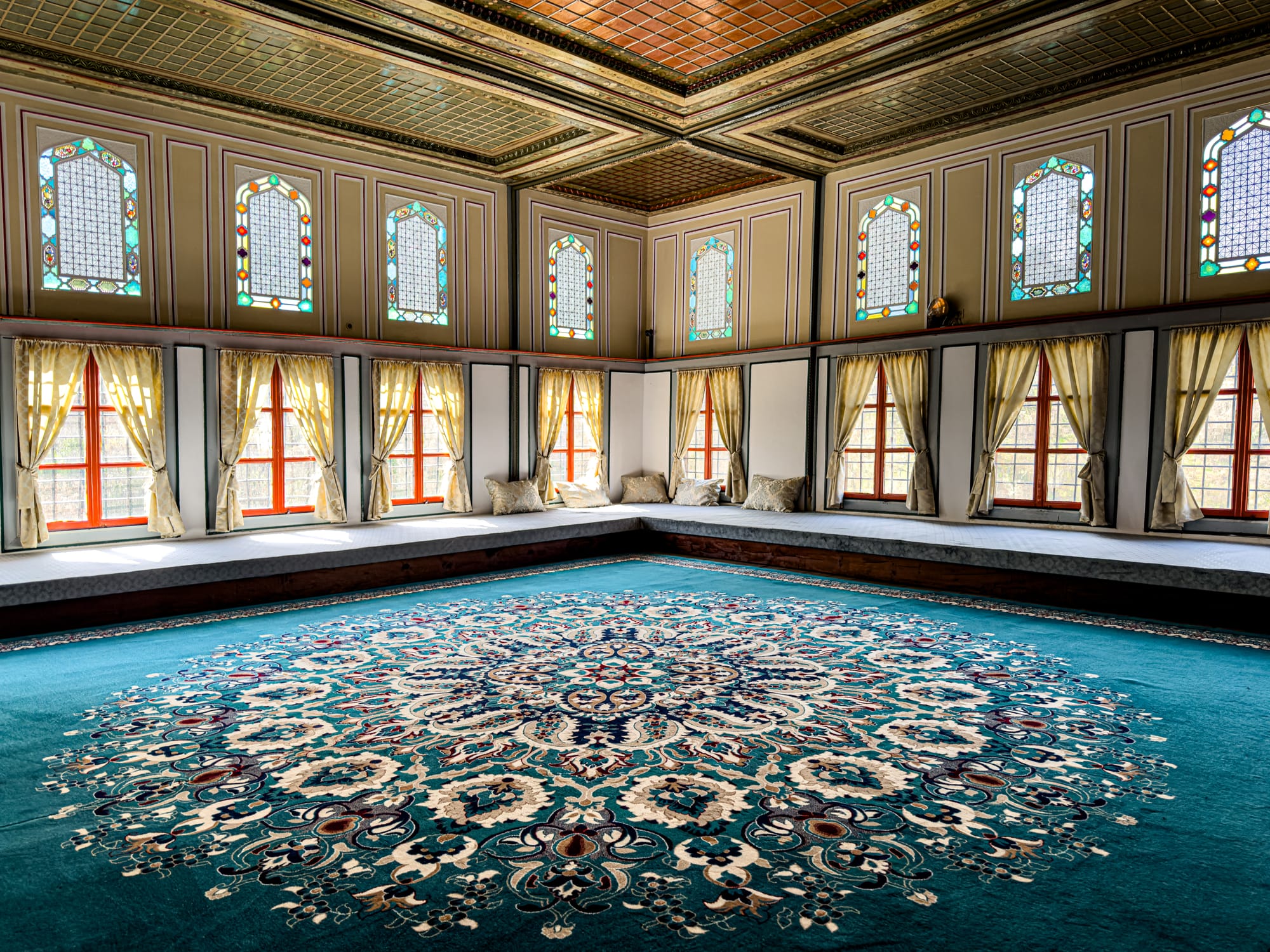
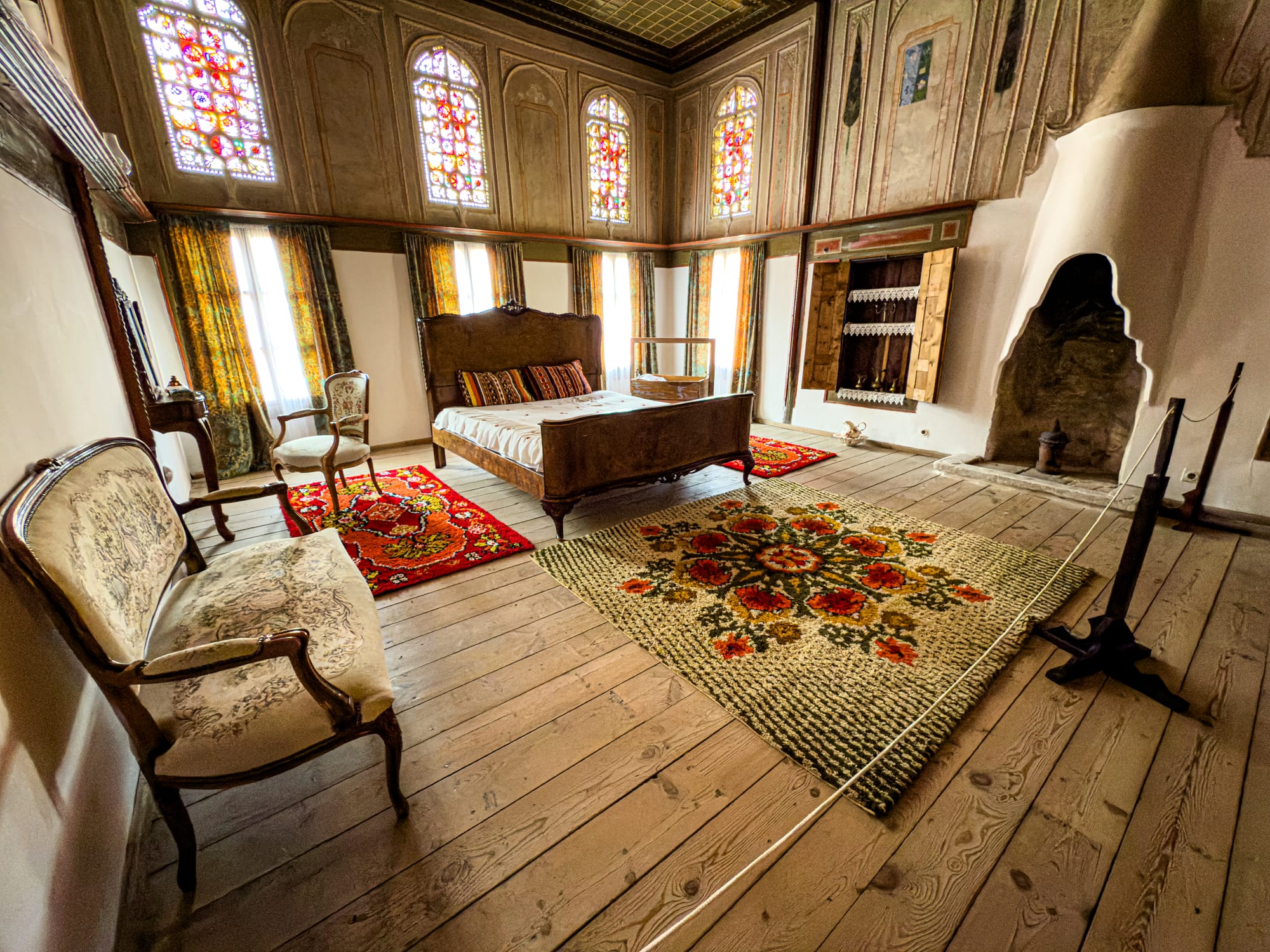
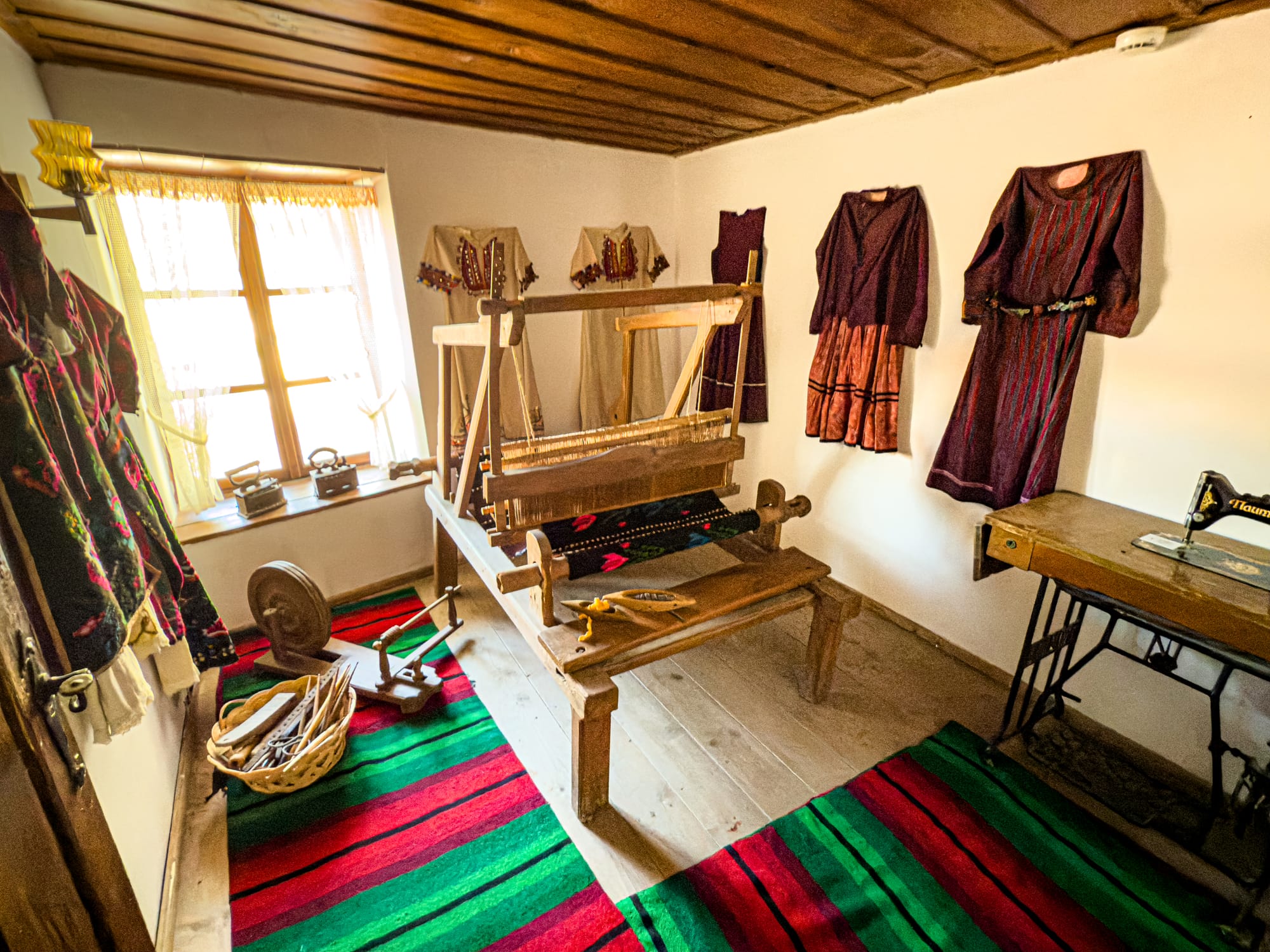
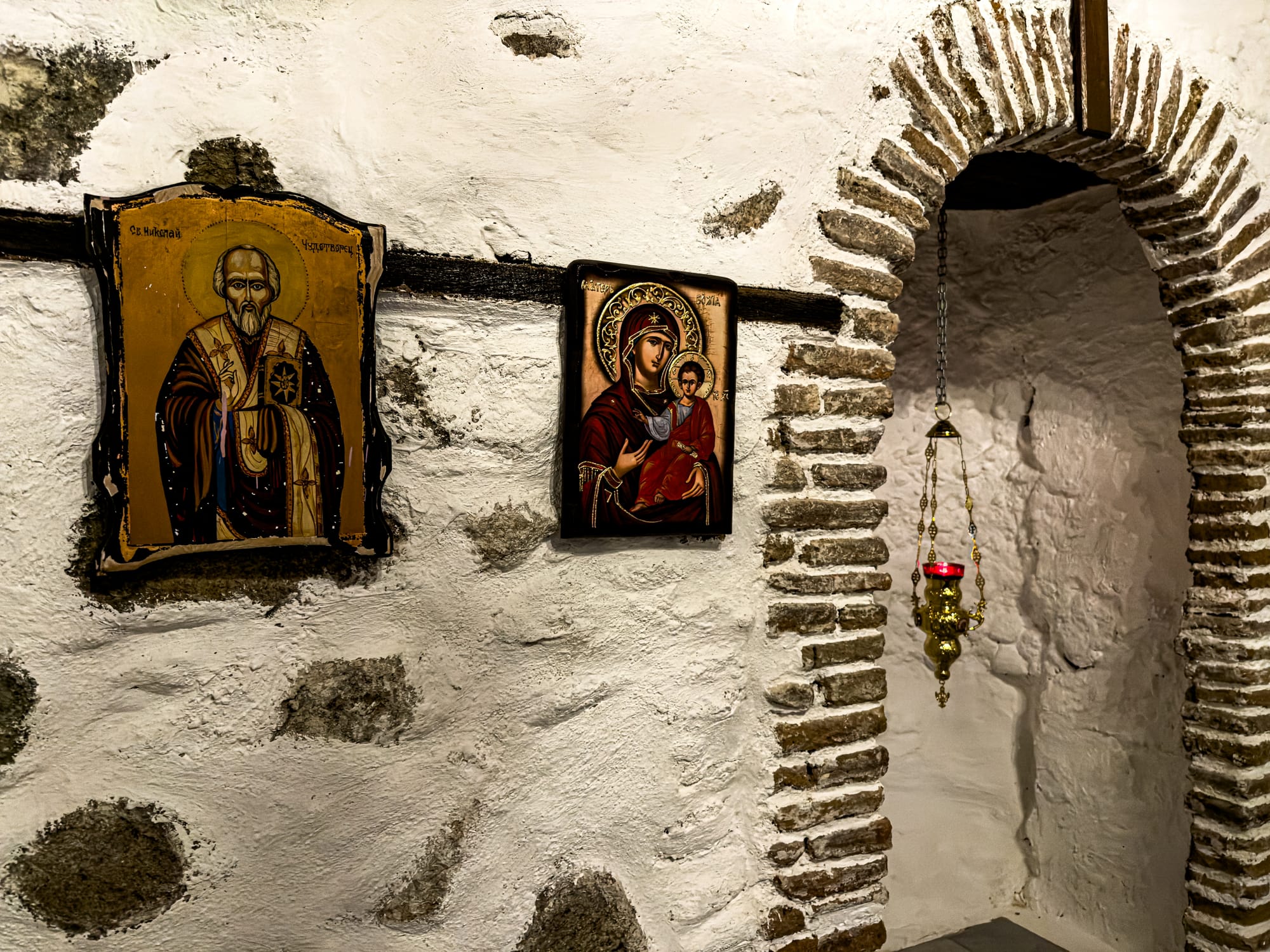
Inside the Kordopulov House in Melnik: stained-glass lined salons, Revival-era bedrooms, weaving rooms, and a private chapel
The house combines residential space with vast cellars dug into the sandstone beneath. Its rooms are decorated with Venetian glass, carved wooden ceilings, and hidden chambers once used to protect revolutionaries.
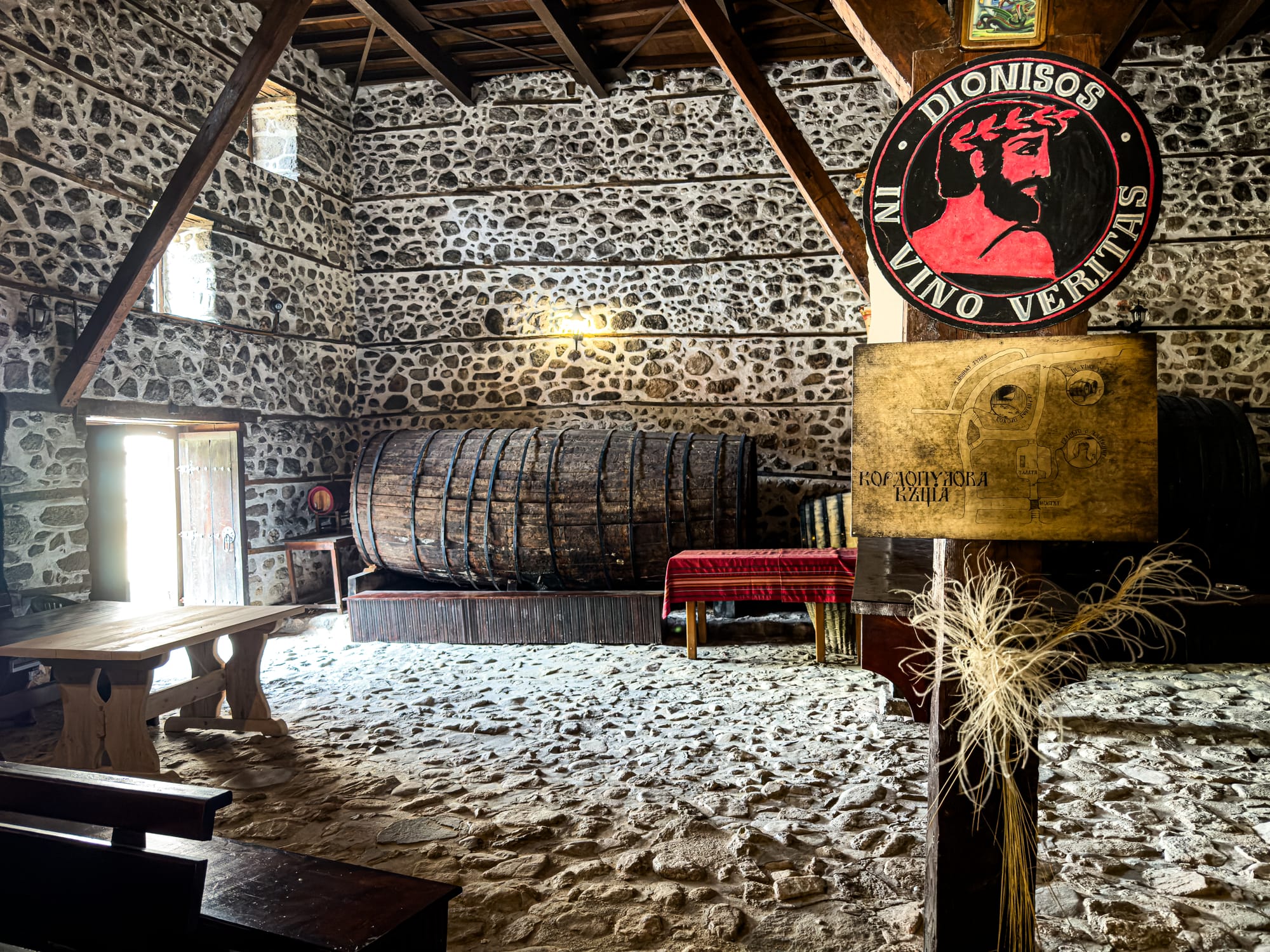
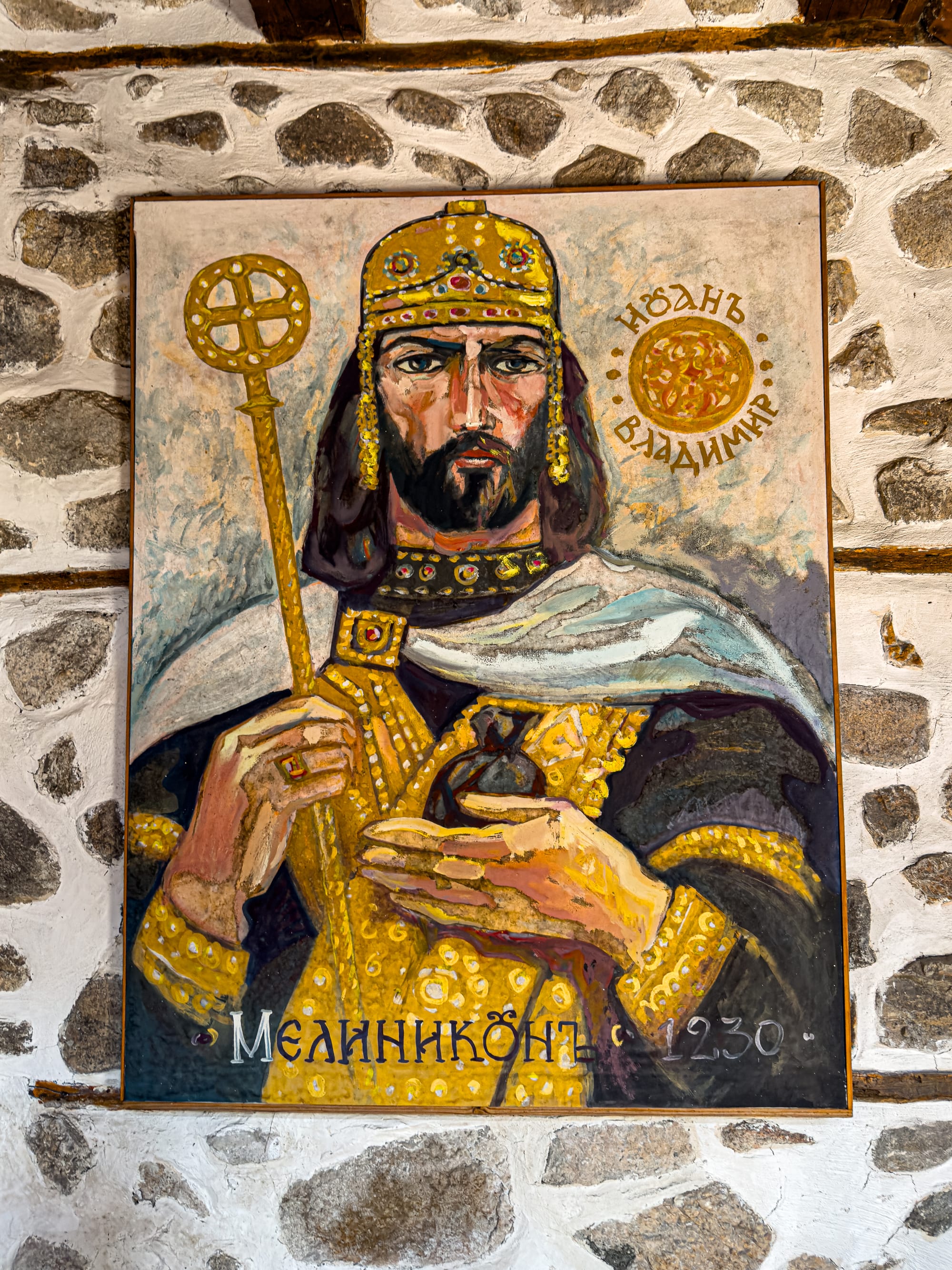
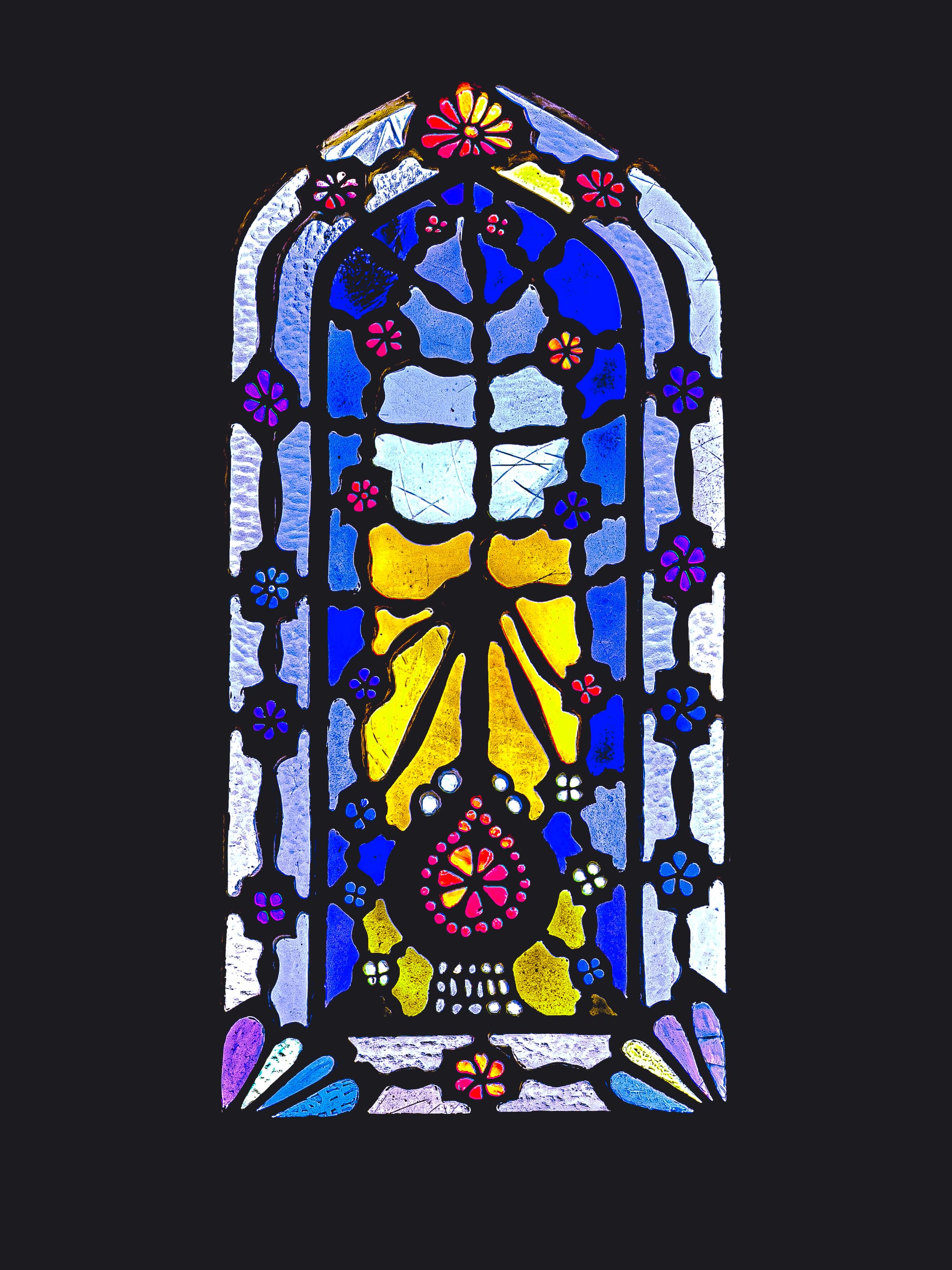
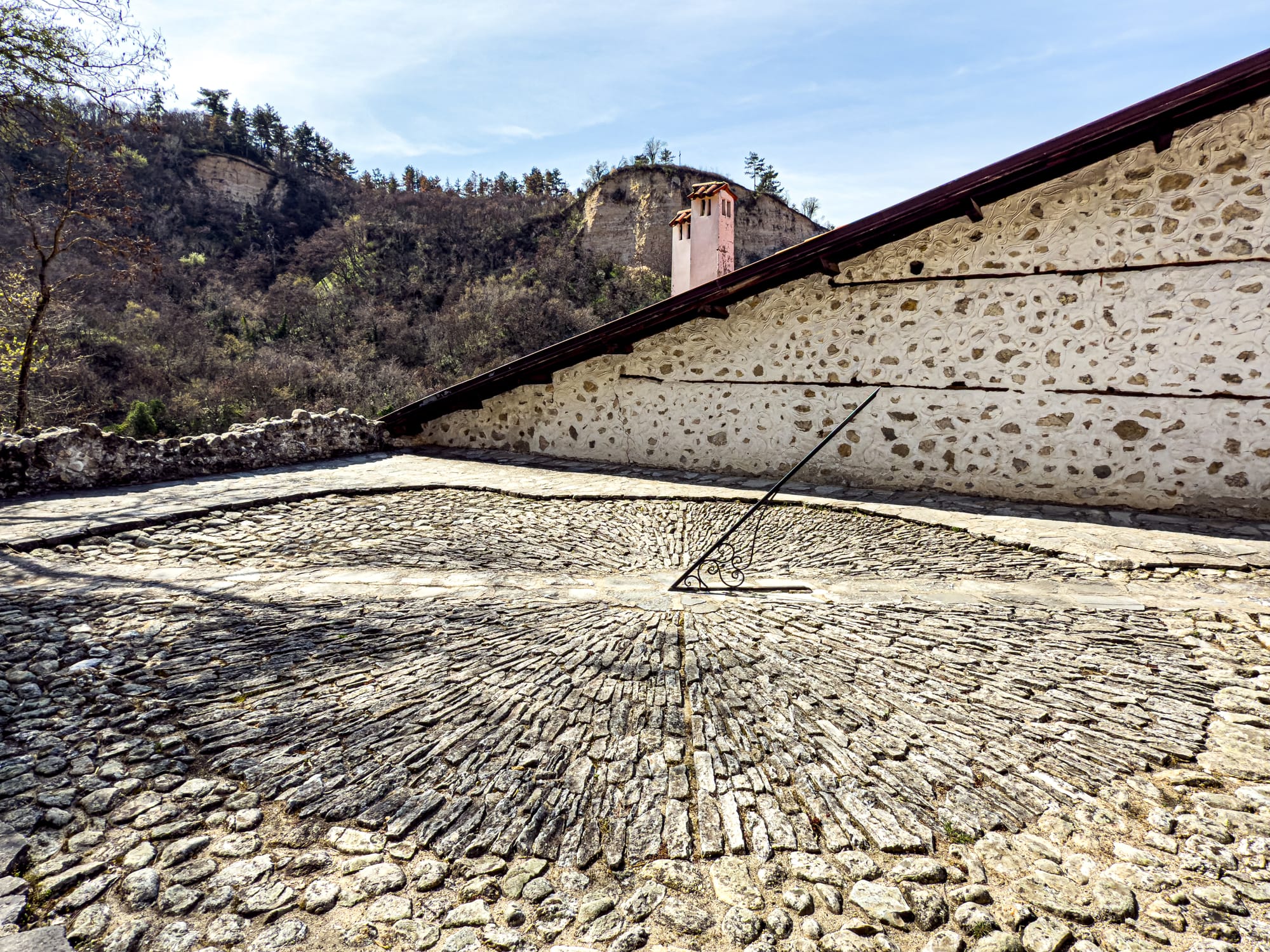
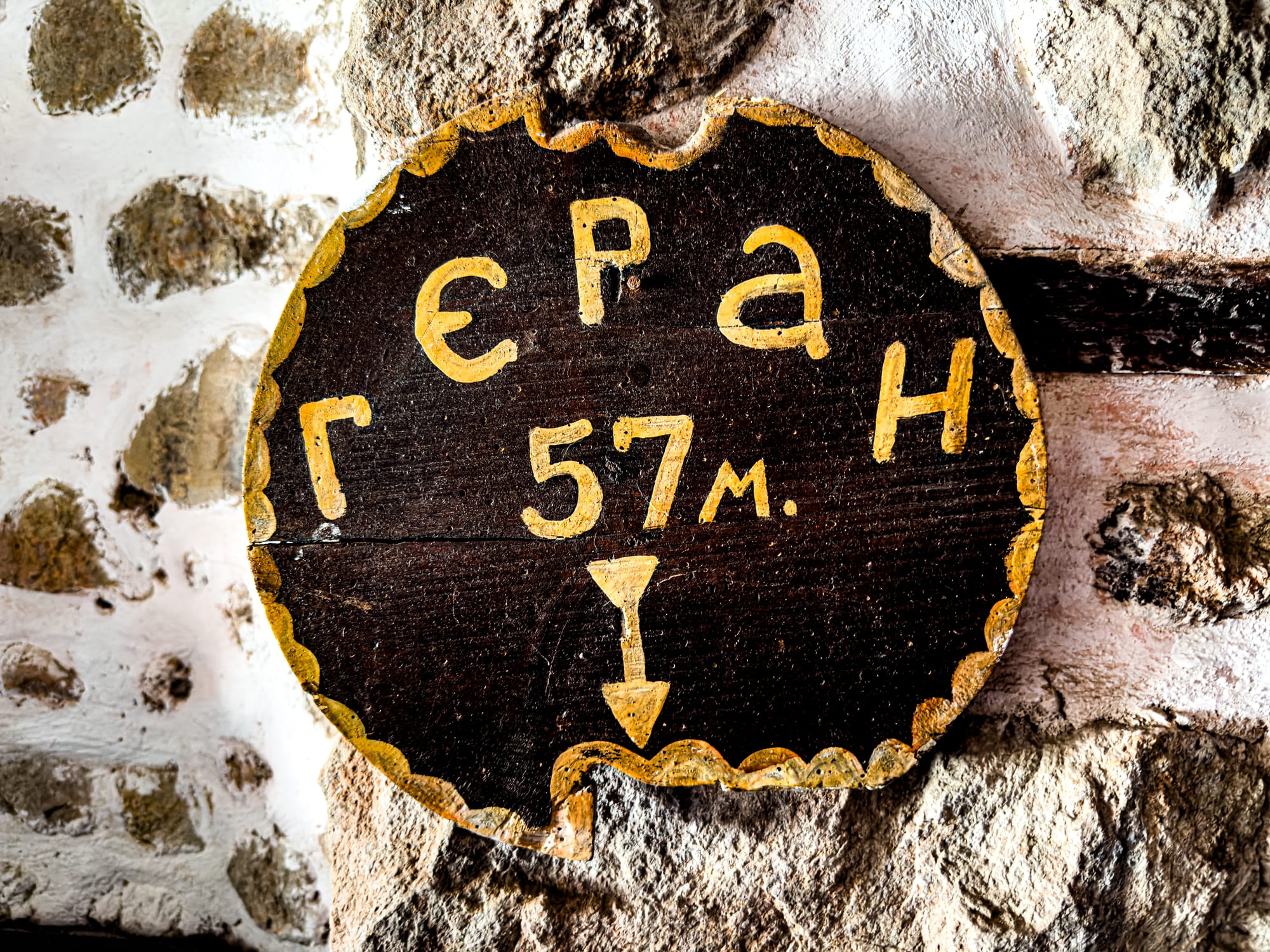
Details from Kordopulov House
Touring its halls, then descending into the cool, stone-lined cellars, linked the domestic and the agricultural, the personal and the communal. Here, architecture and wine converge, each preserving the valley’s story in a different form.
A monastery among the hills
On the way back to Bansko we stopped at the Rozhen Monastery, a place of stillness and shadowed light. The monastery is one of the oldest in the Pirin region, founded in medieval times and rebuilt in later centuries.
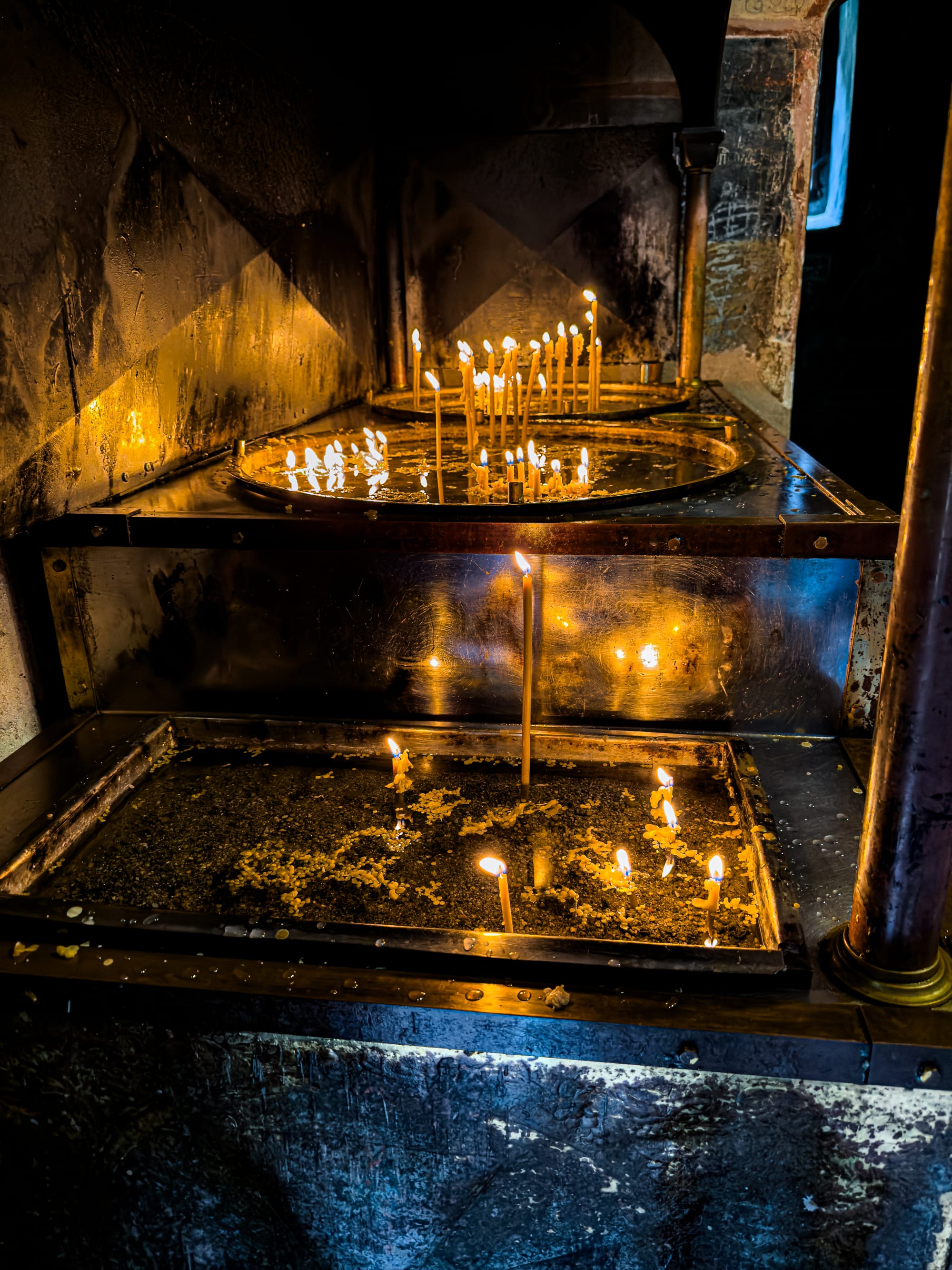
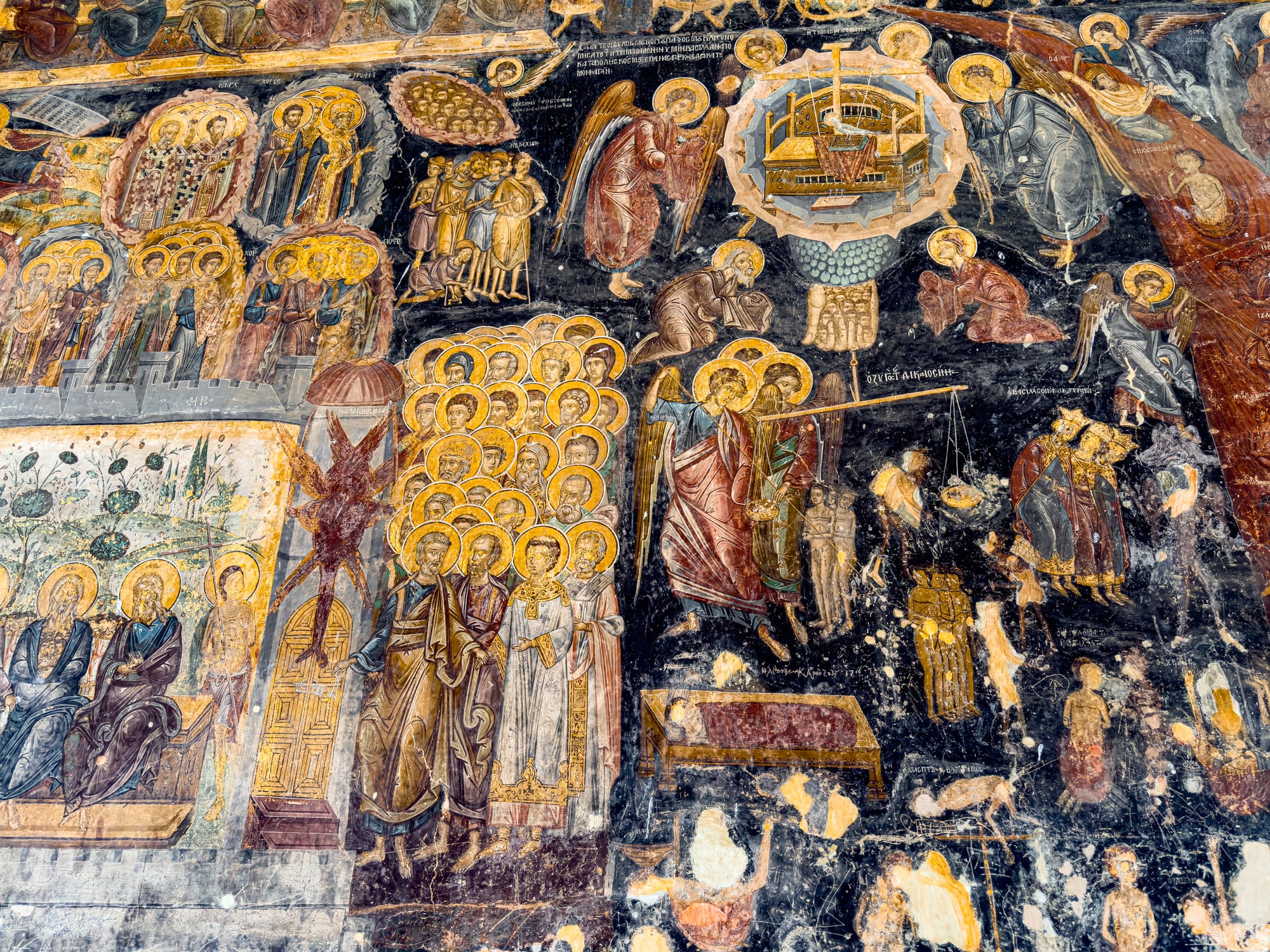
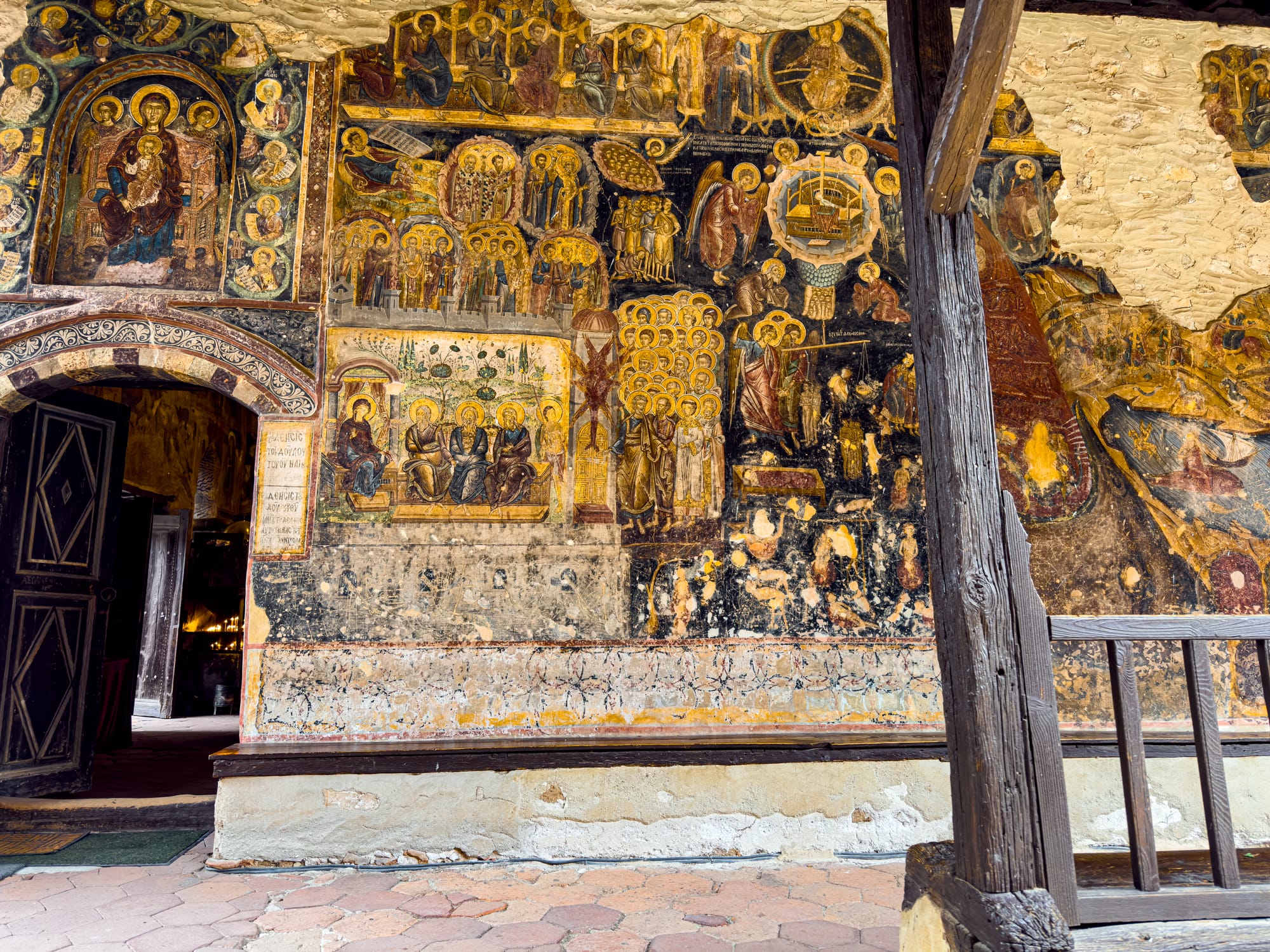
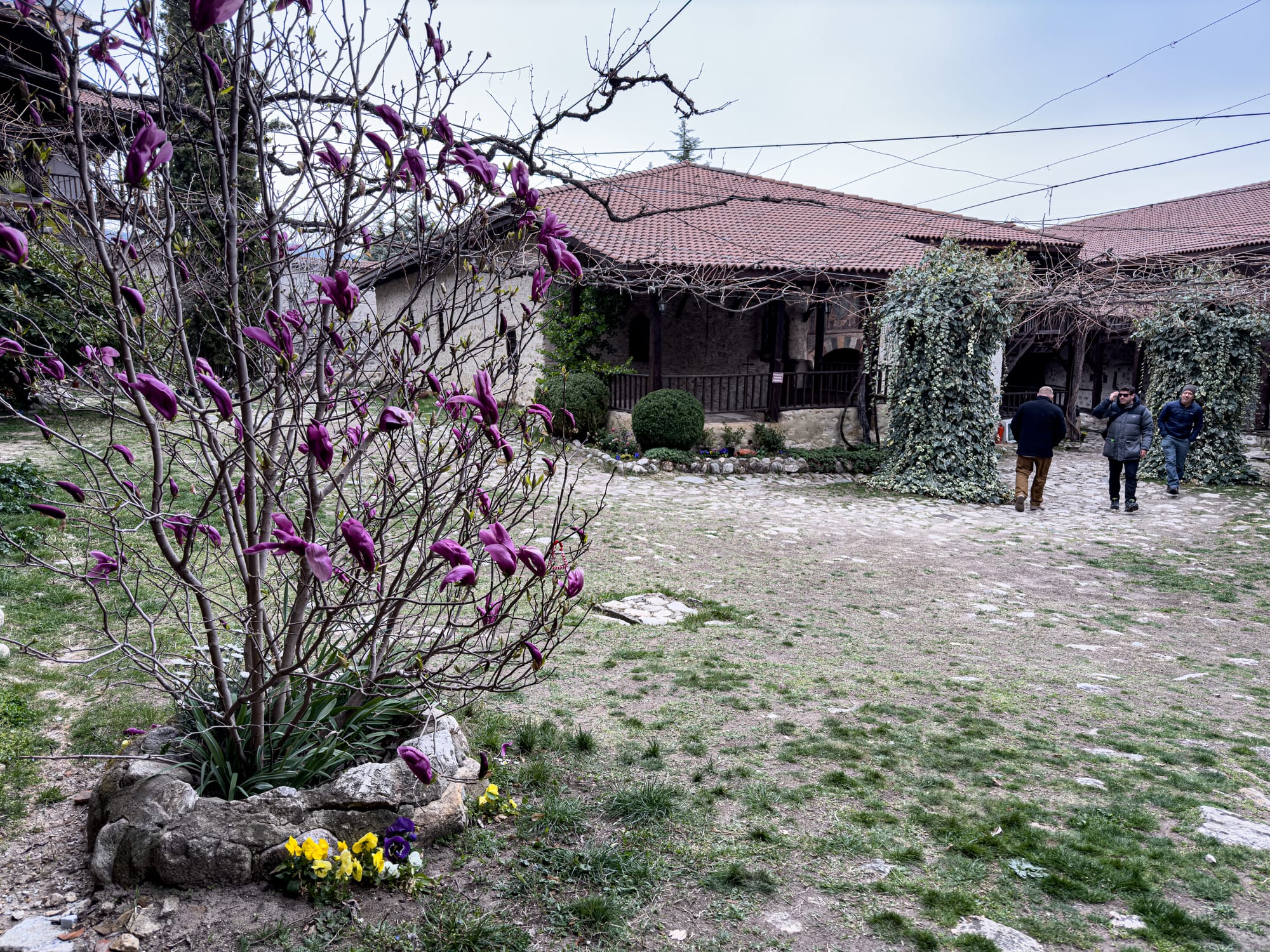
Scenes from Rozhen Monastery
Its walls are covered with frescoes that show both local craftsmanship and Byzantine influence. Some are faded, but many still glow with blues and golds, carrying scenes that have watched centuries of pilgrims pass.
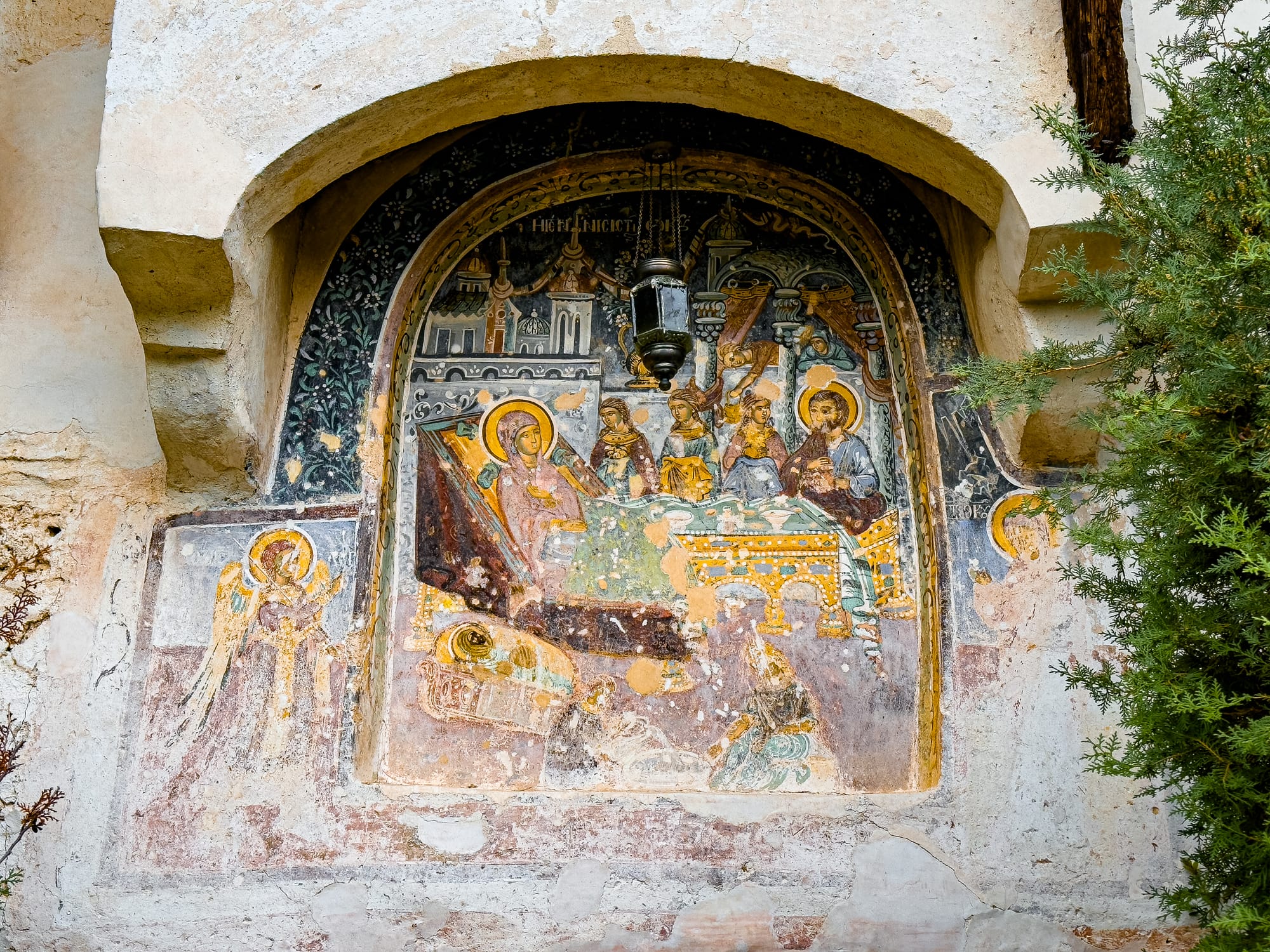
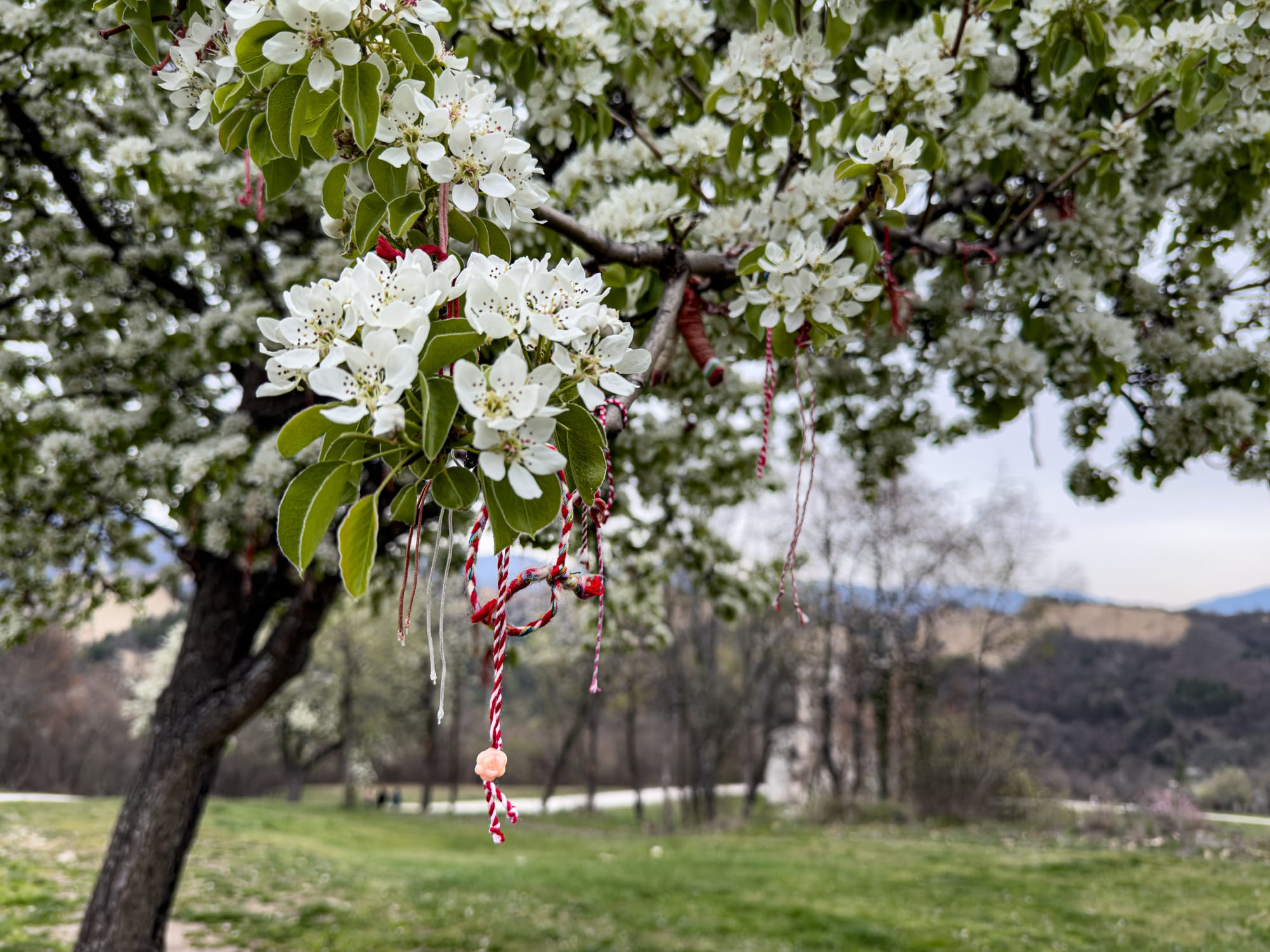
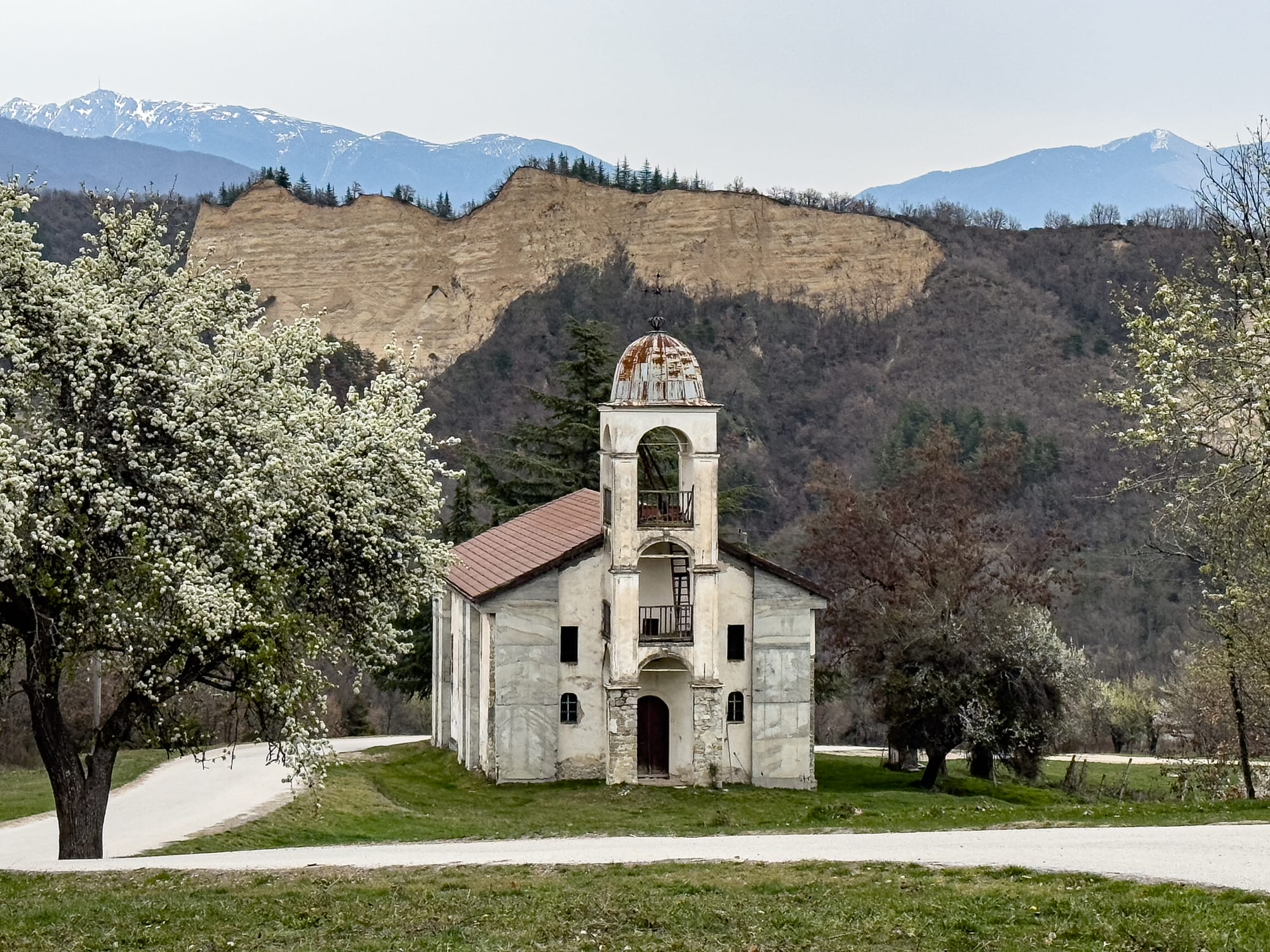
Blossoming trees and a small church near Rozhen Monastery, framed by the Melnik cliffs
Outside, apple and cherry trees surrounded the grounds, and branches were tied with Martenitsi, the red-and-white threads worn for health and spring.
A lovely getaway
Spending a weekend in Melnik allows the place to unfold in layers. The town introduces you to its rhythm, the pyramids expand your sense of landscape, the wineries reveal its agricultural heart, and the monastery closes the visit with quiet reflection.
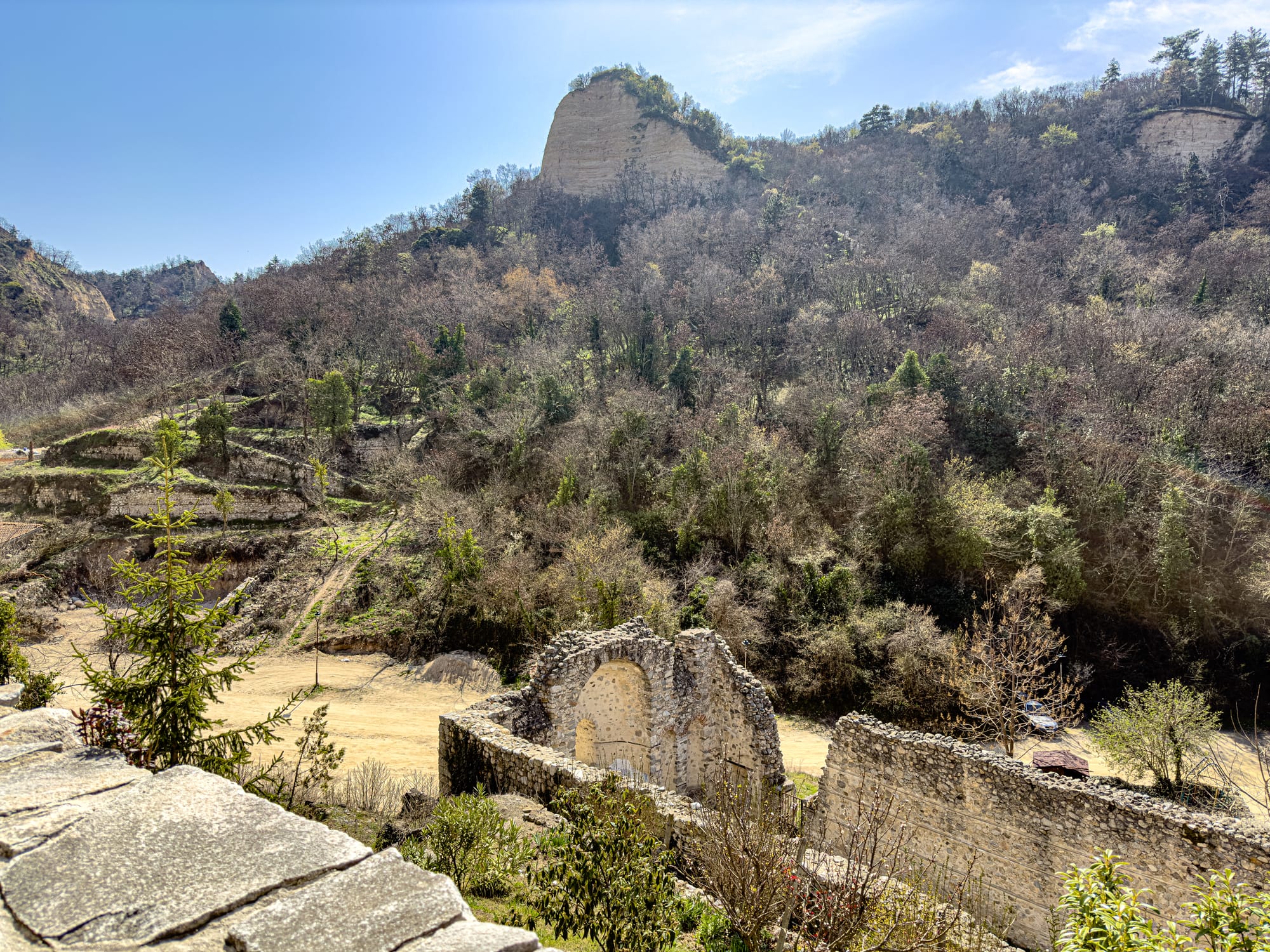
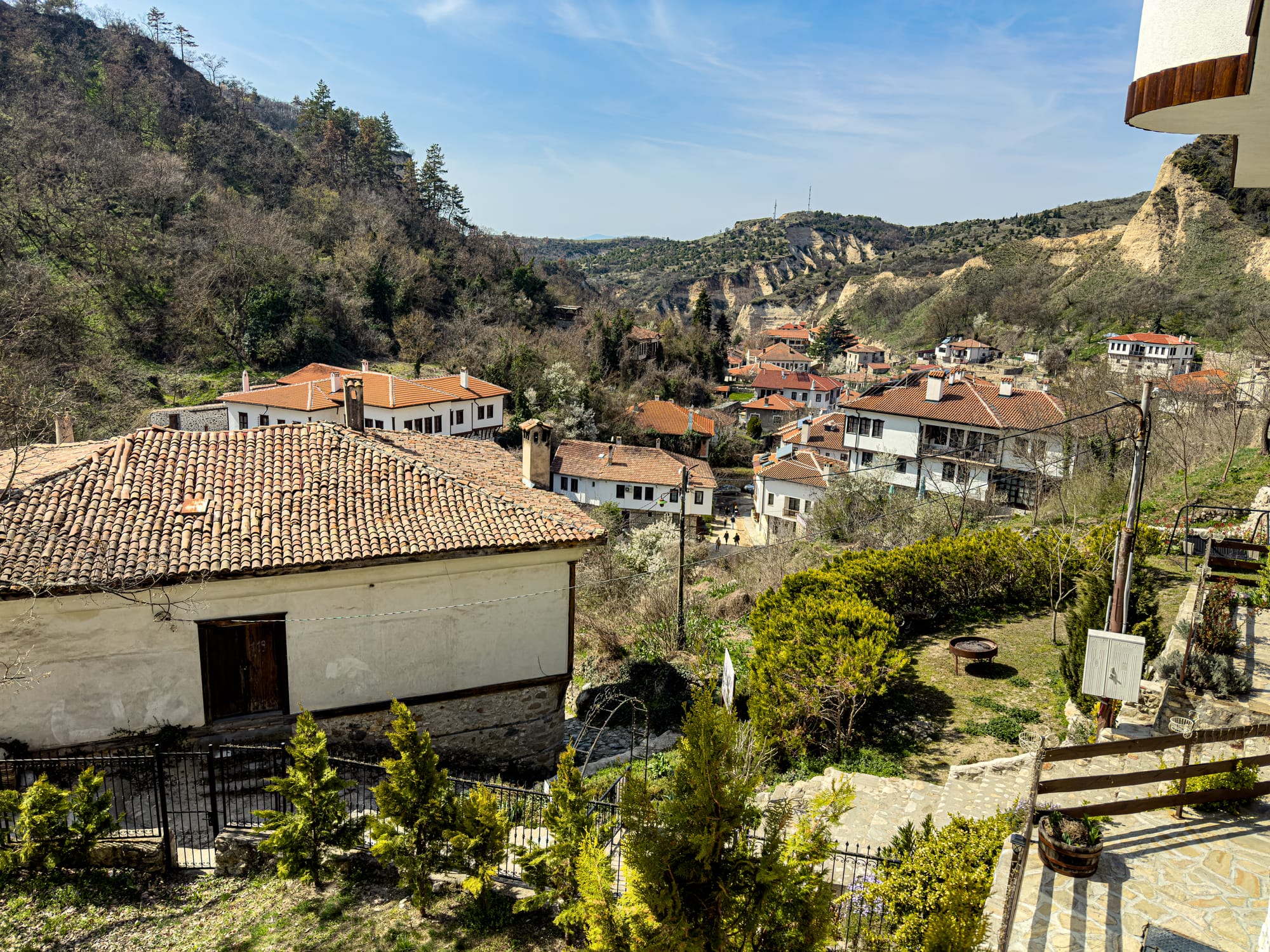
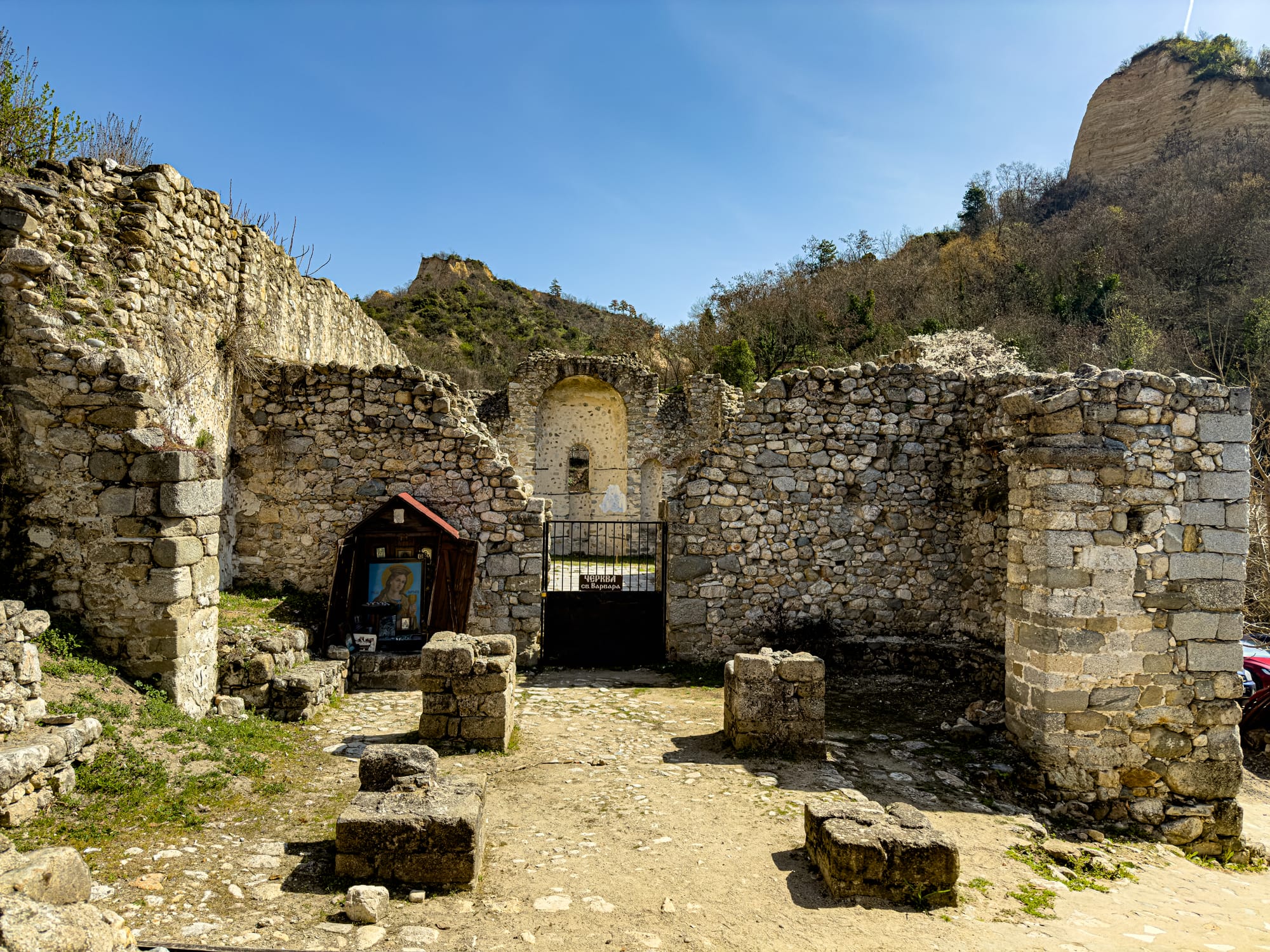
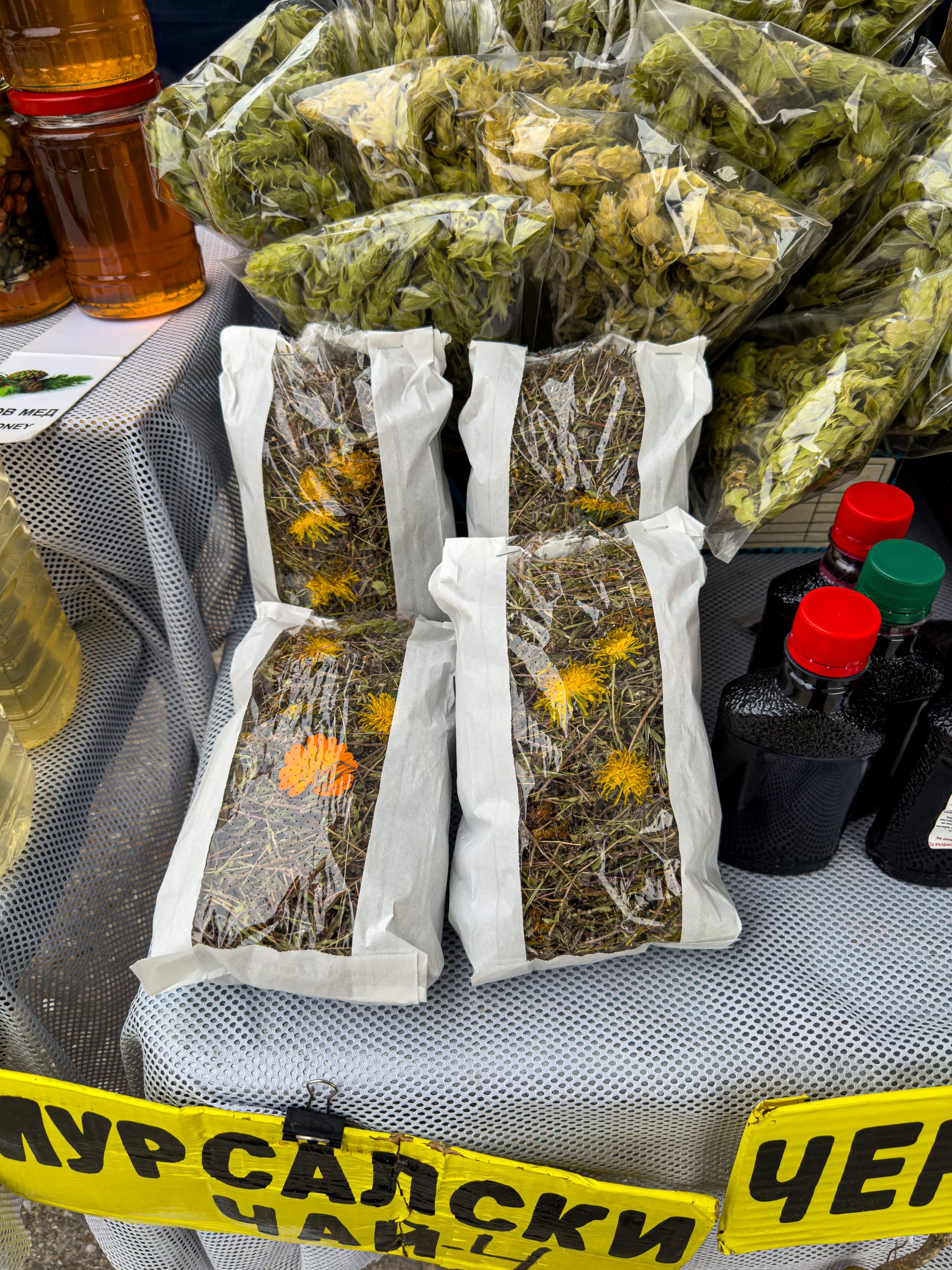
Scenes from Melnik: monastery ruins, village houses, mountain views, and local herbs for sale
For such a small dot on the map, Melnik carries a density of meaning that lingers long after you leave, a reminder that size is not the measure of significance.






